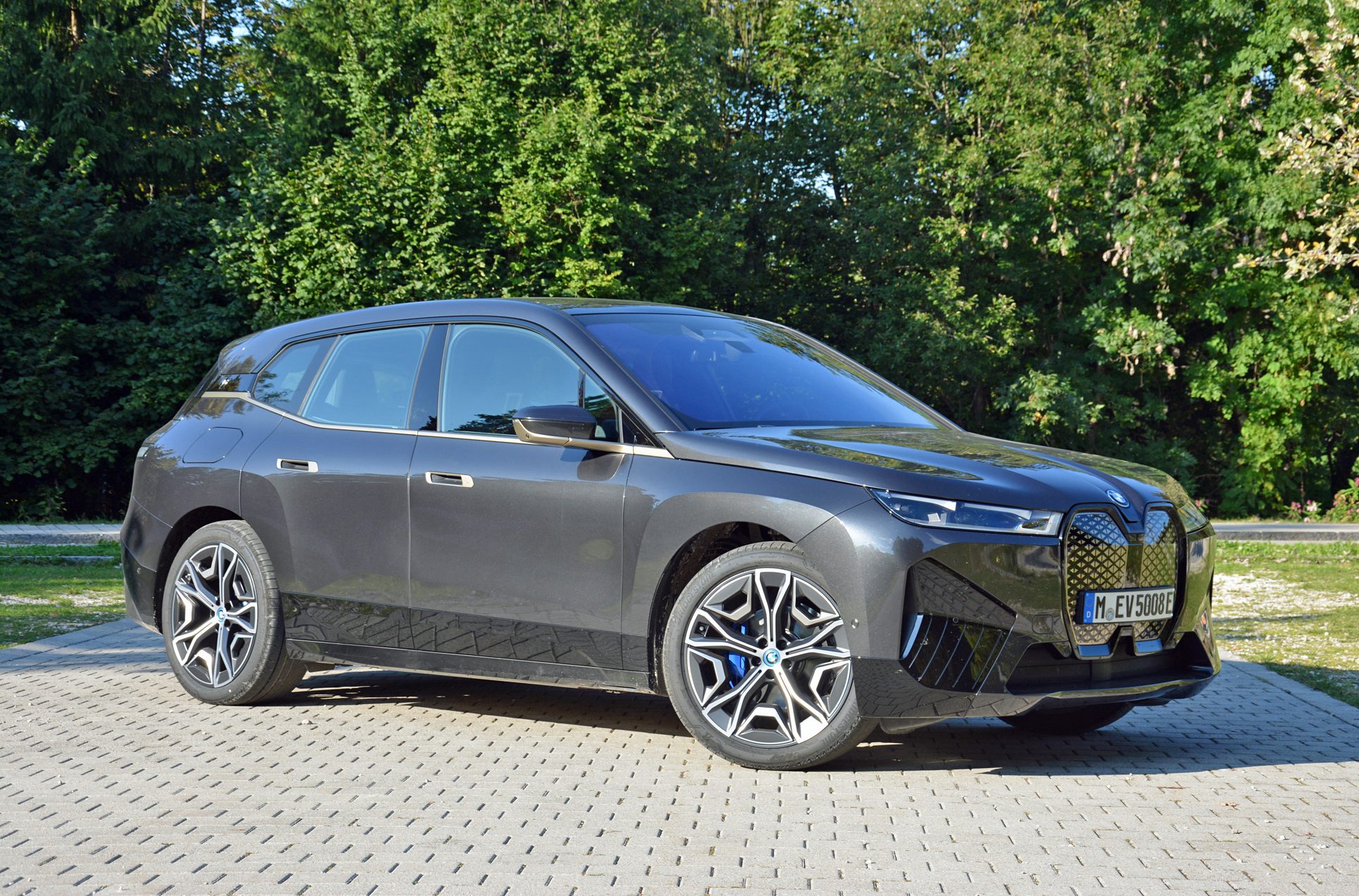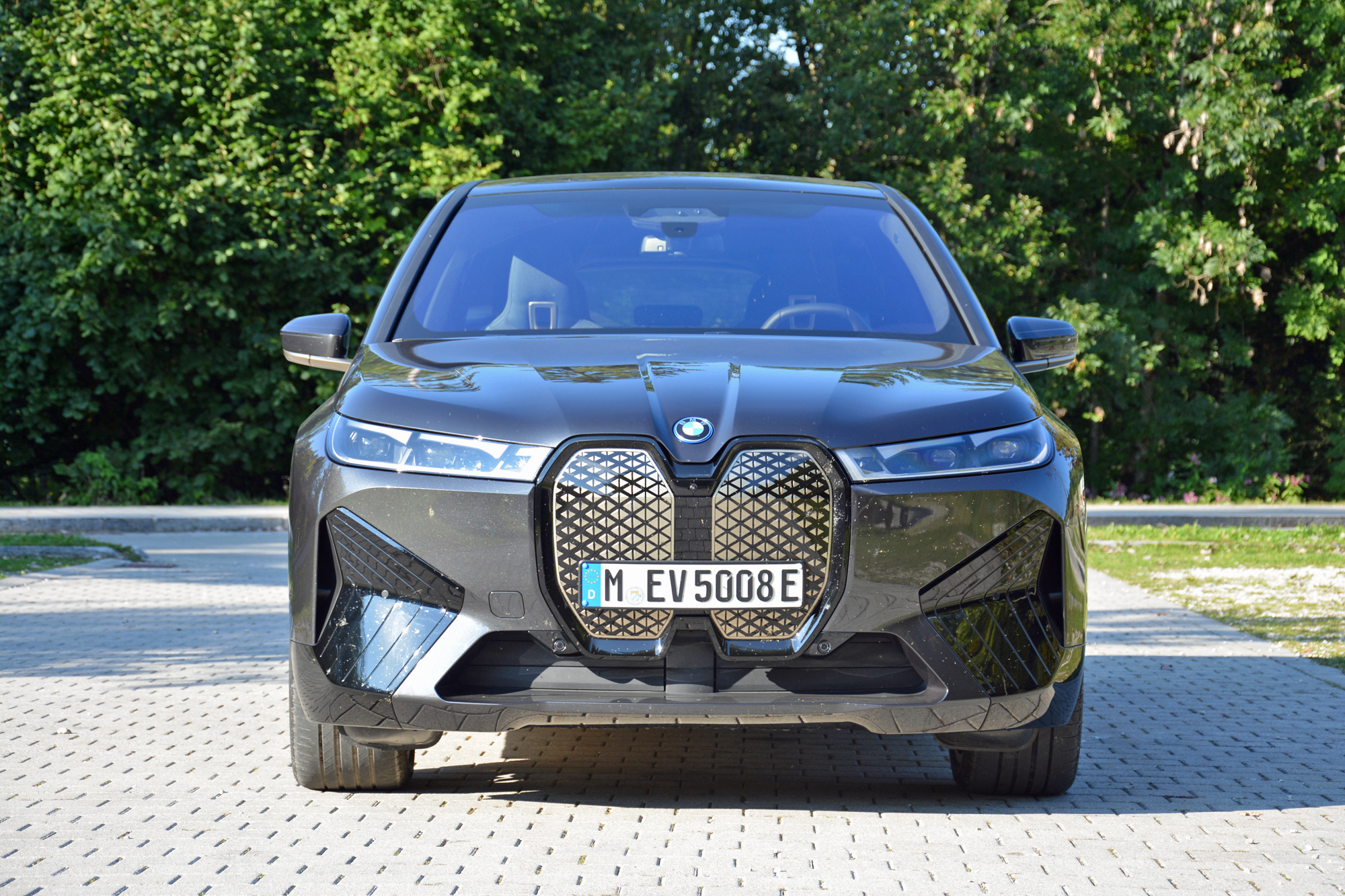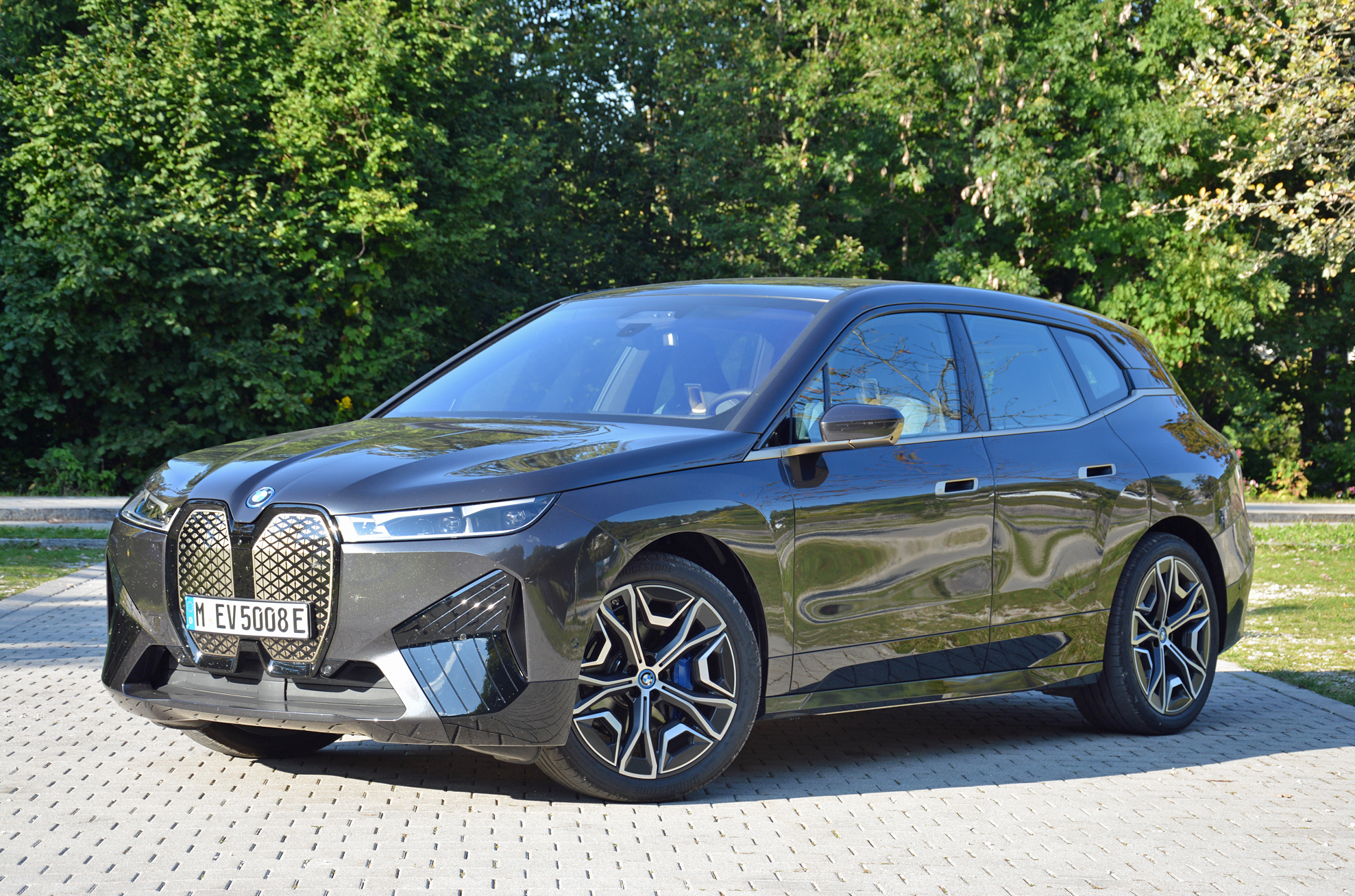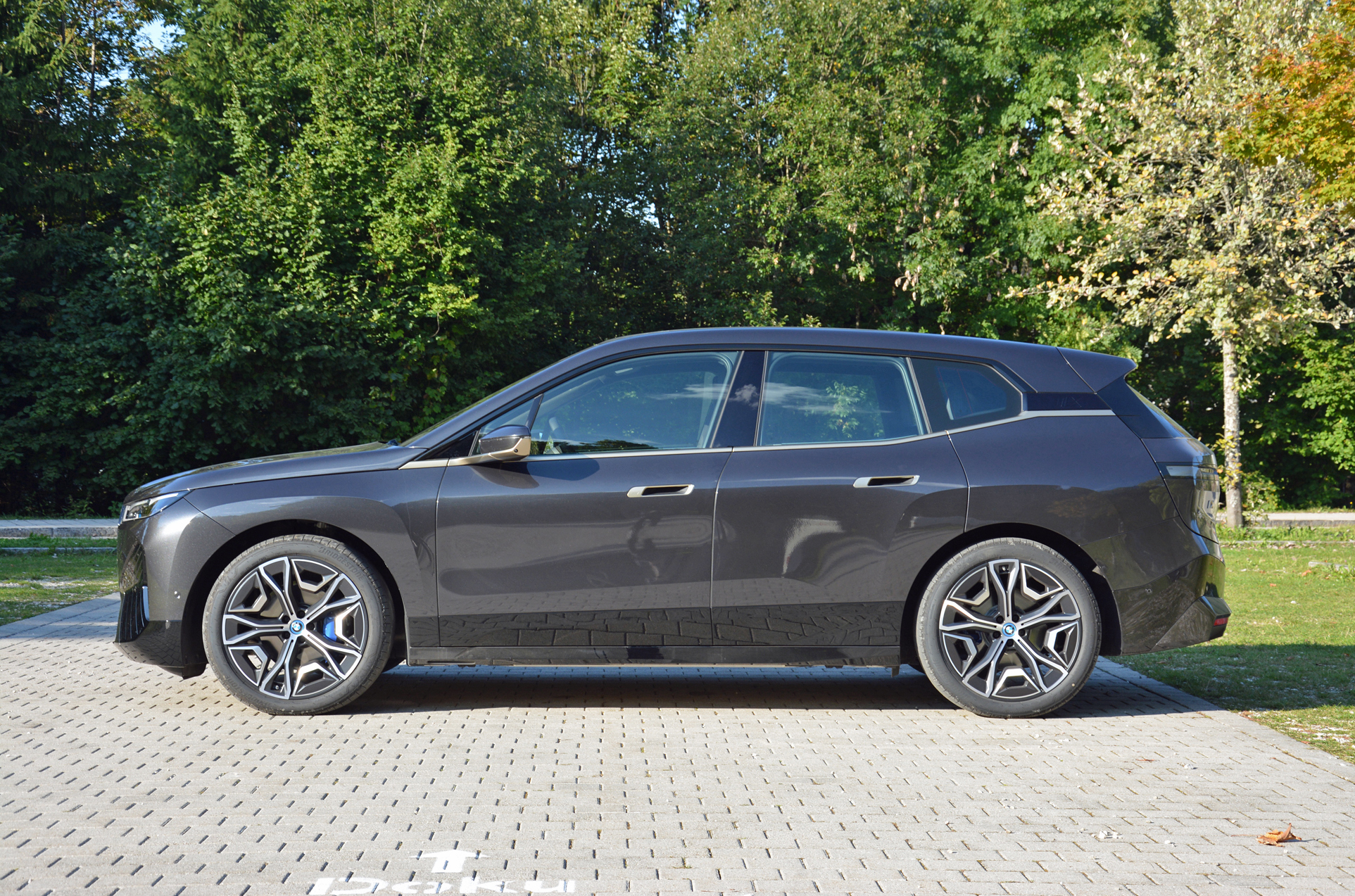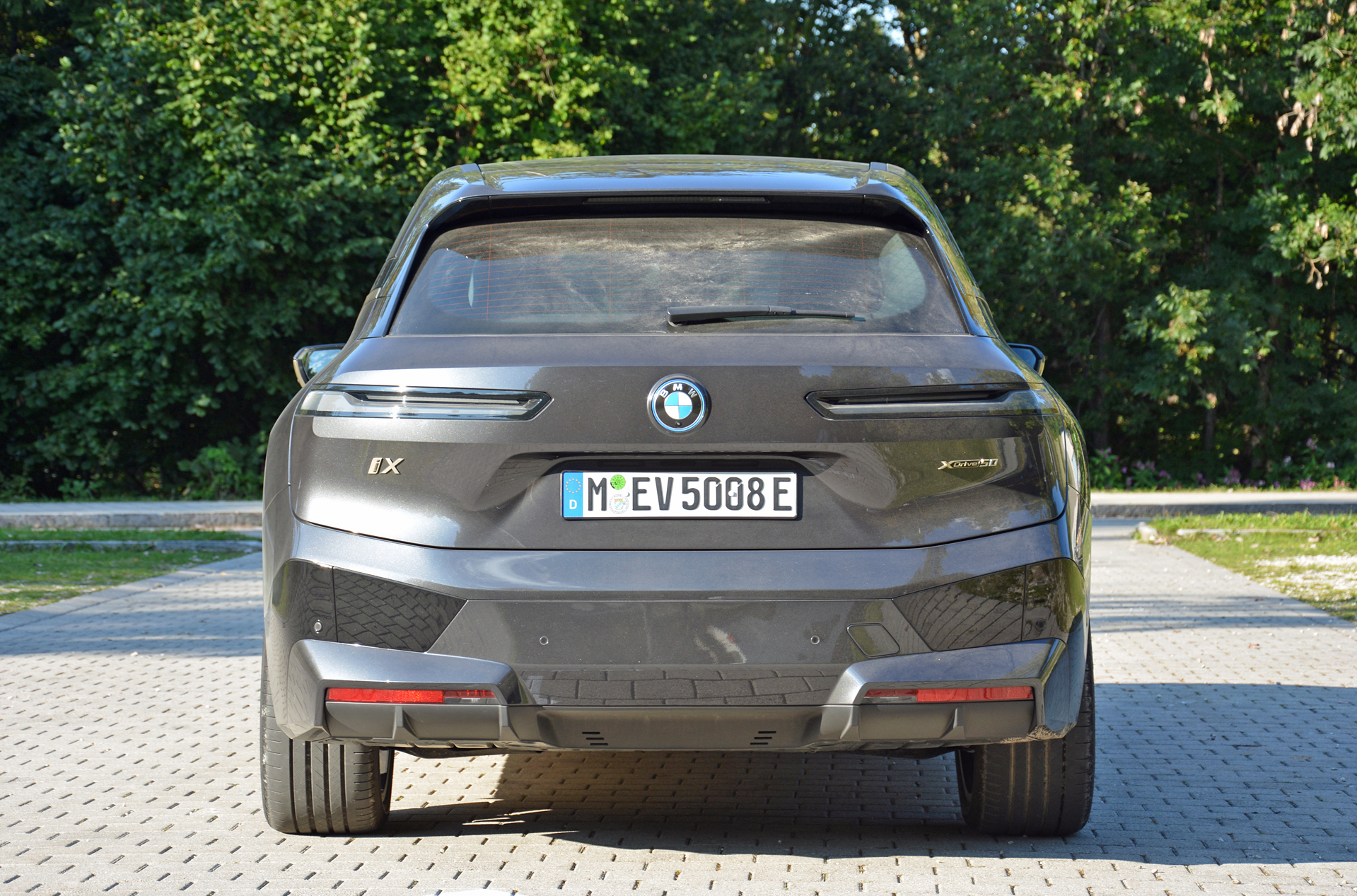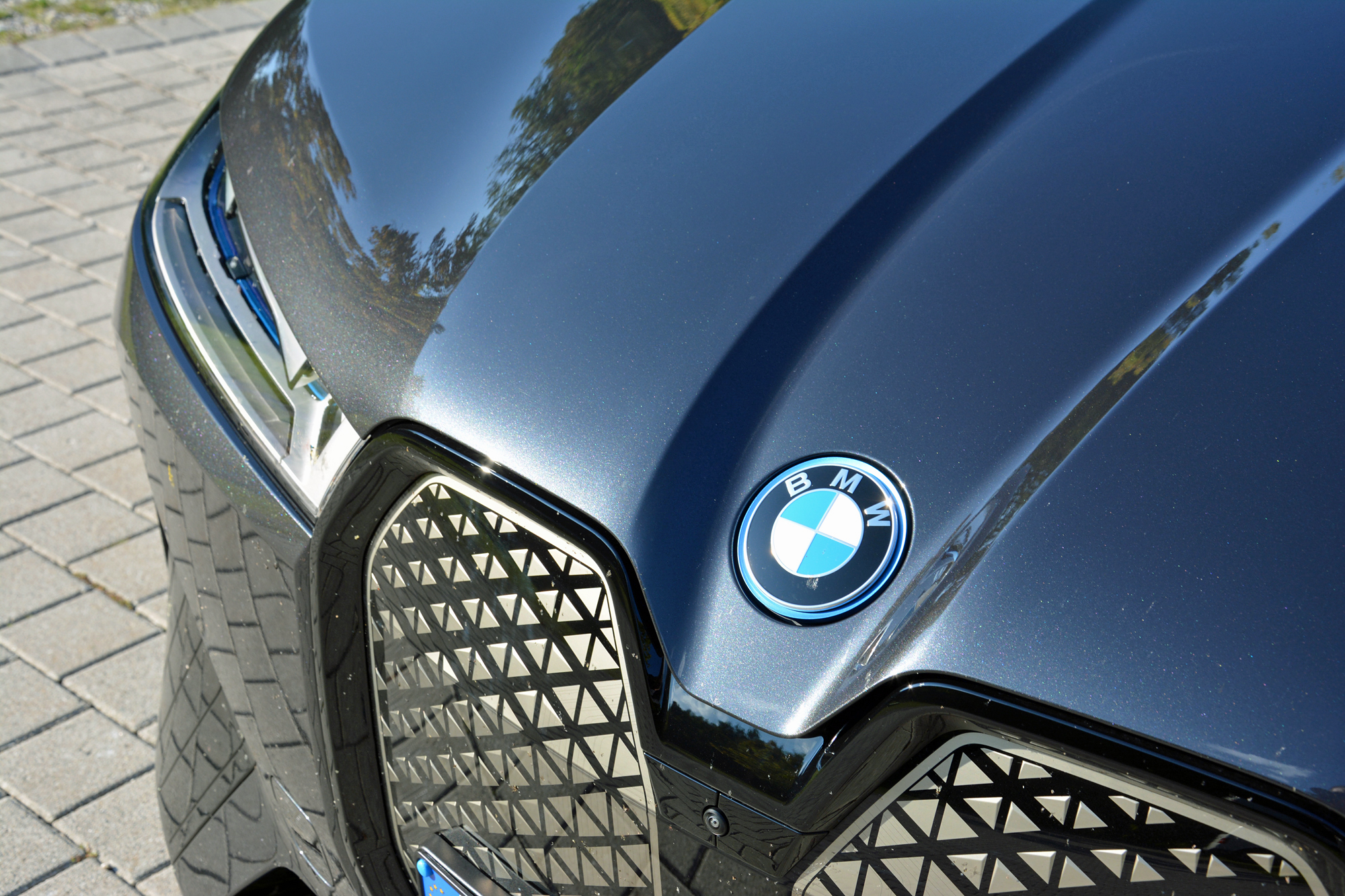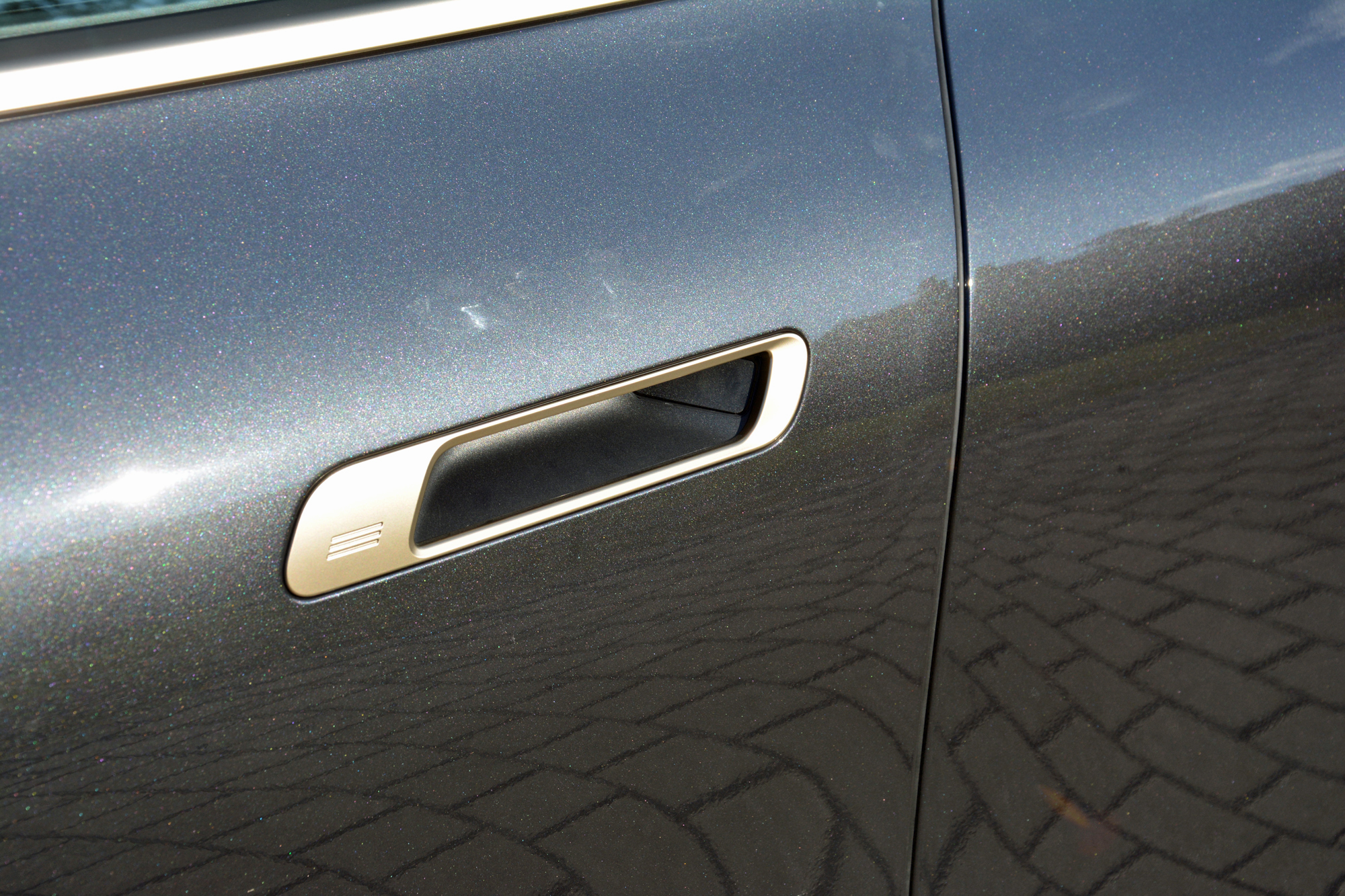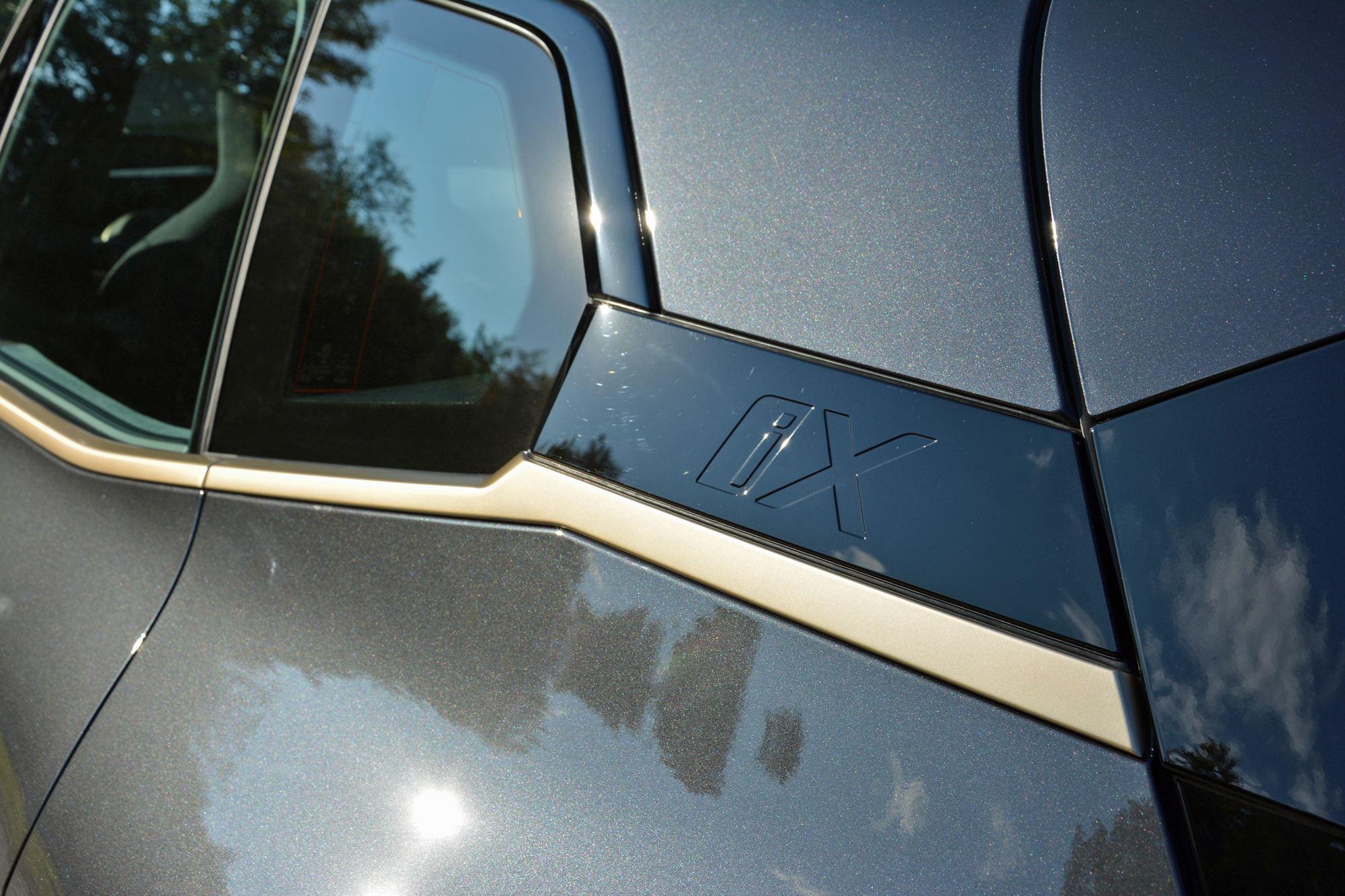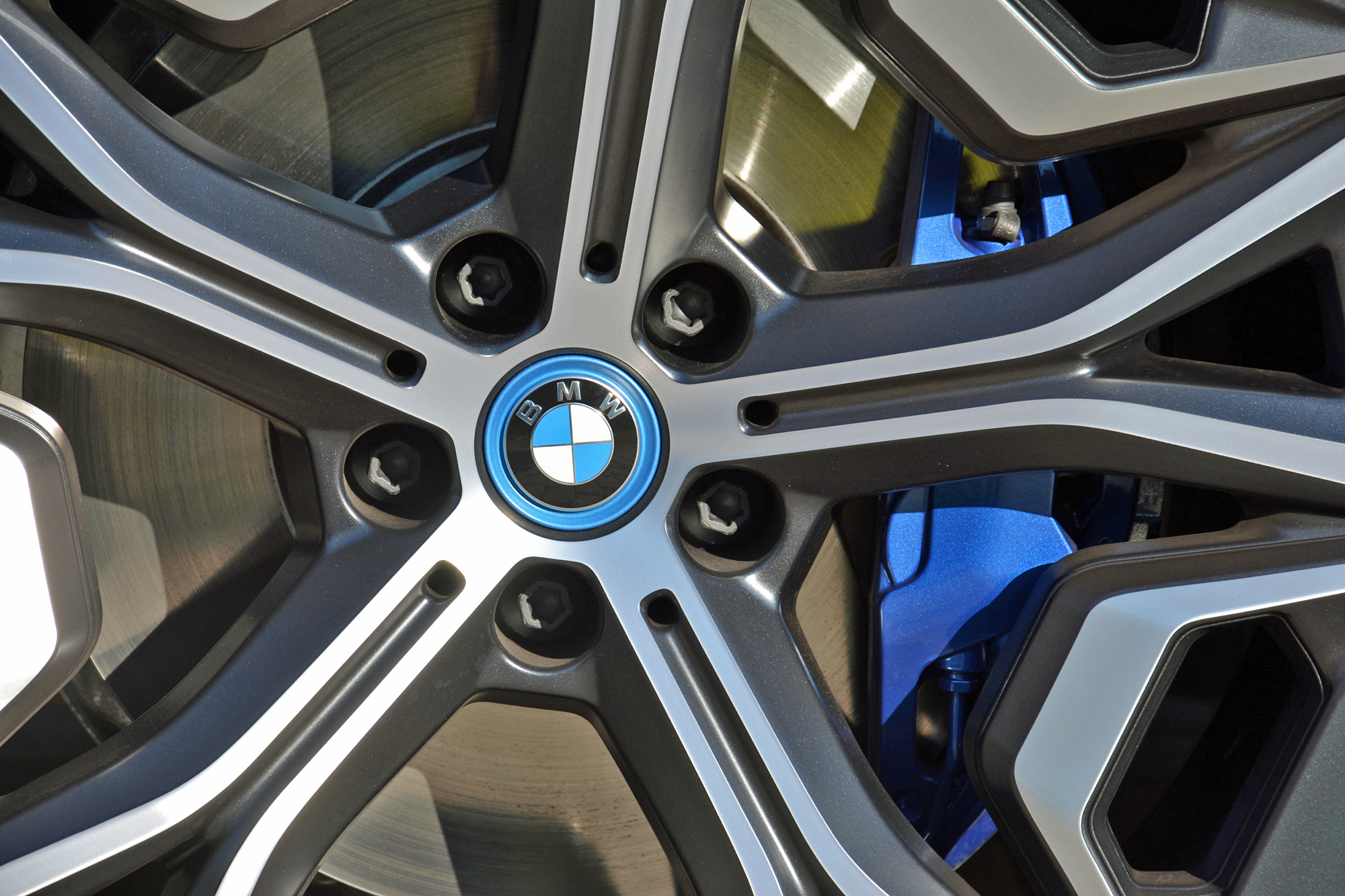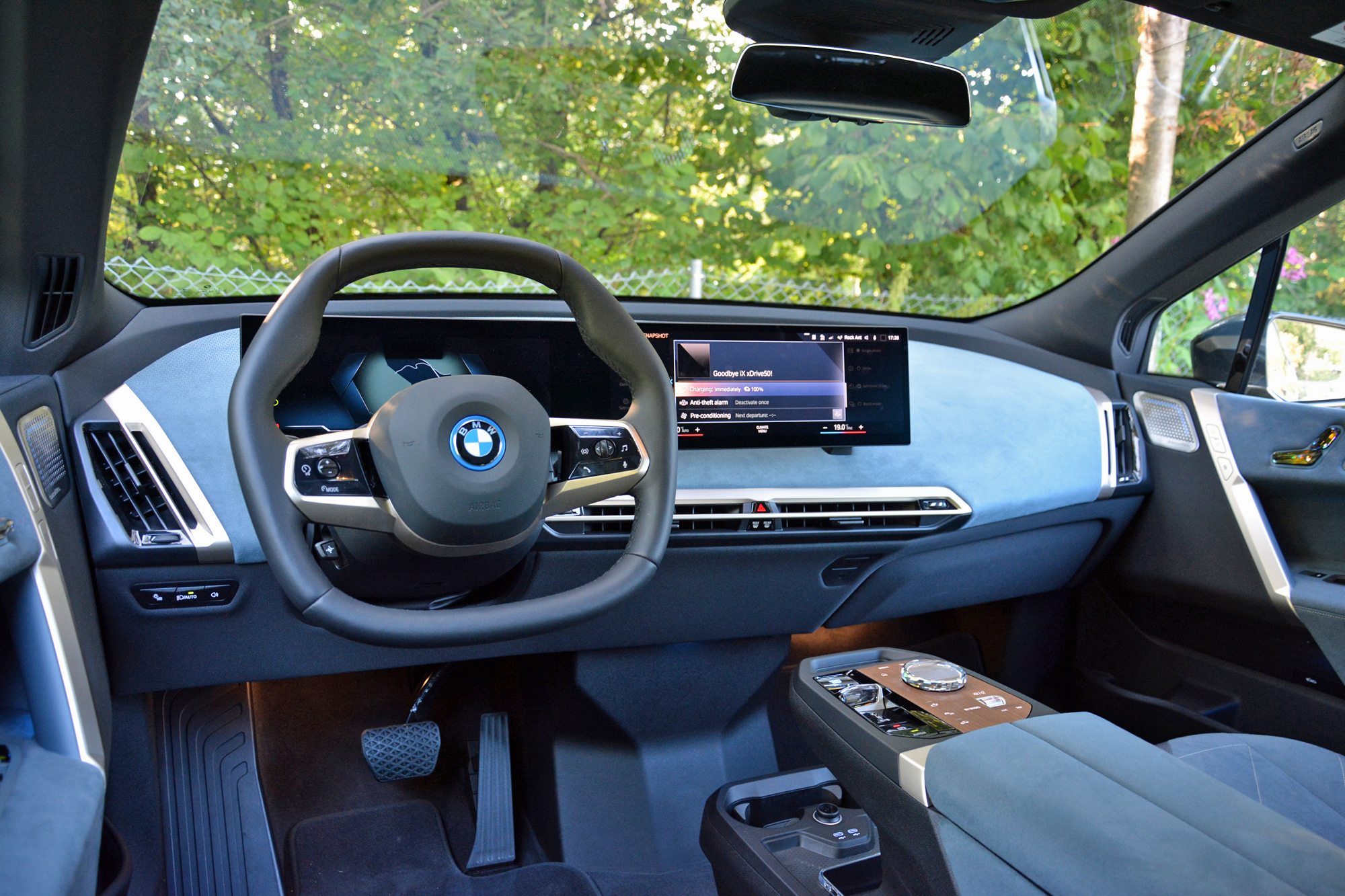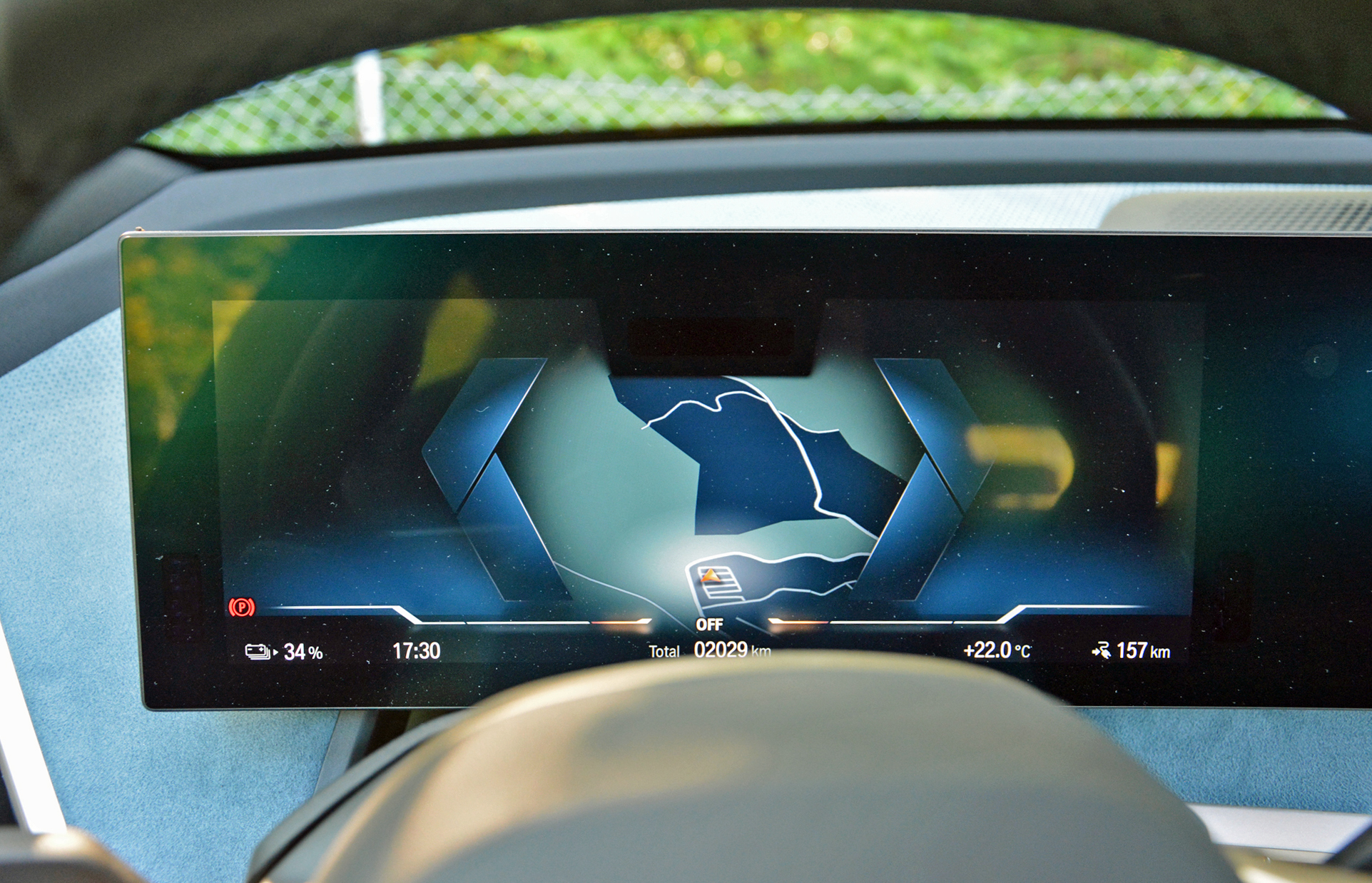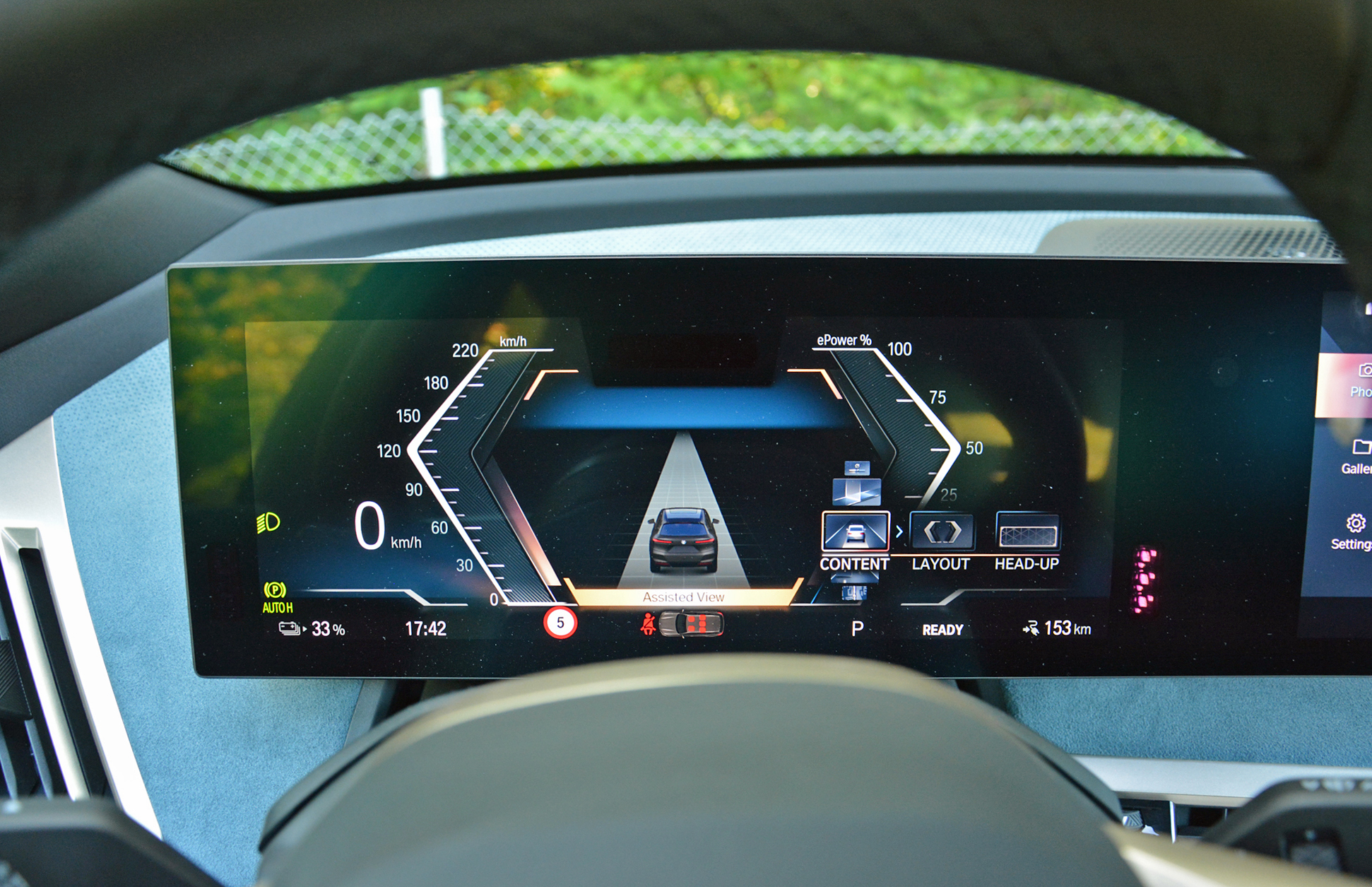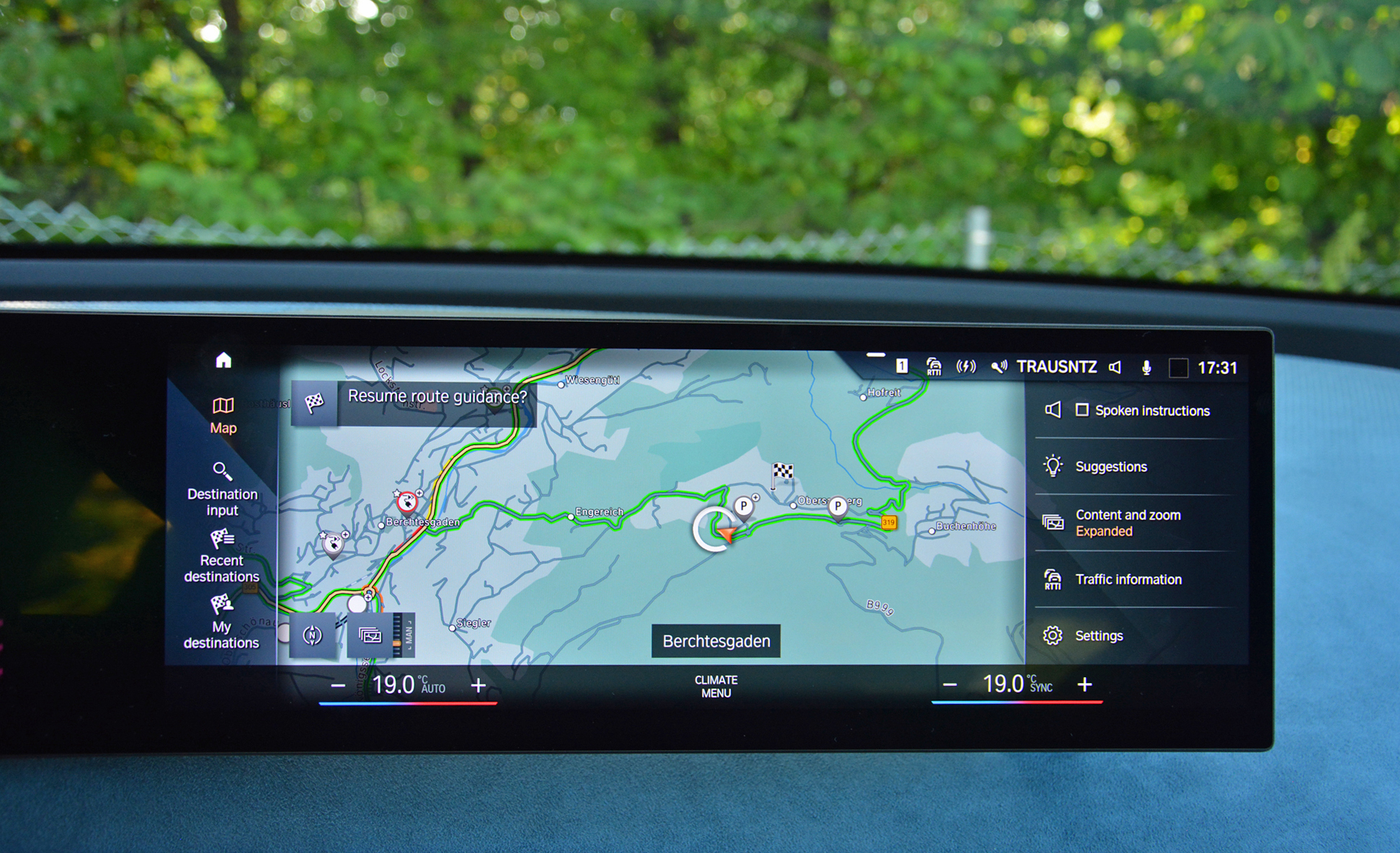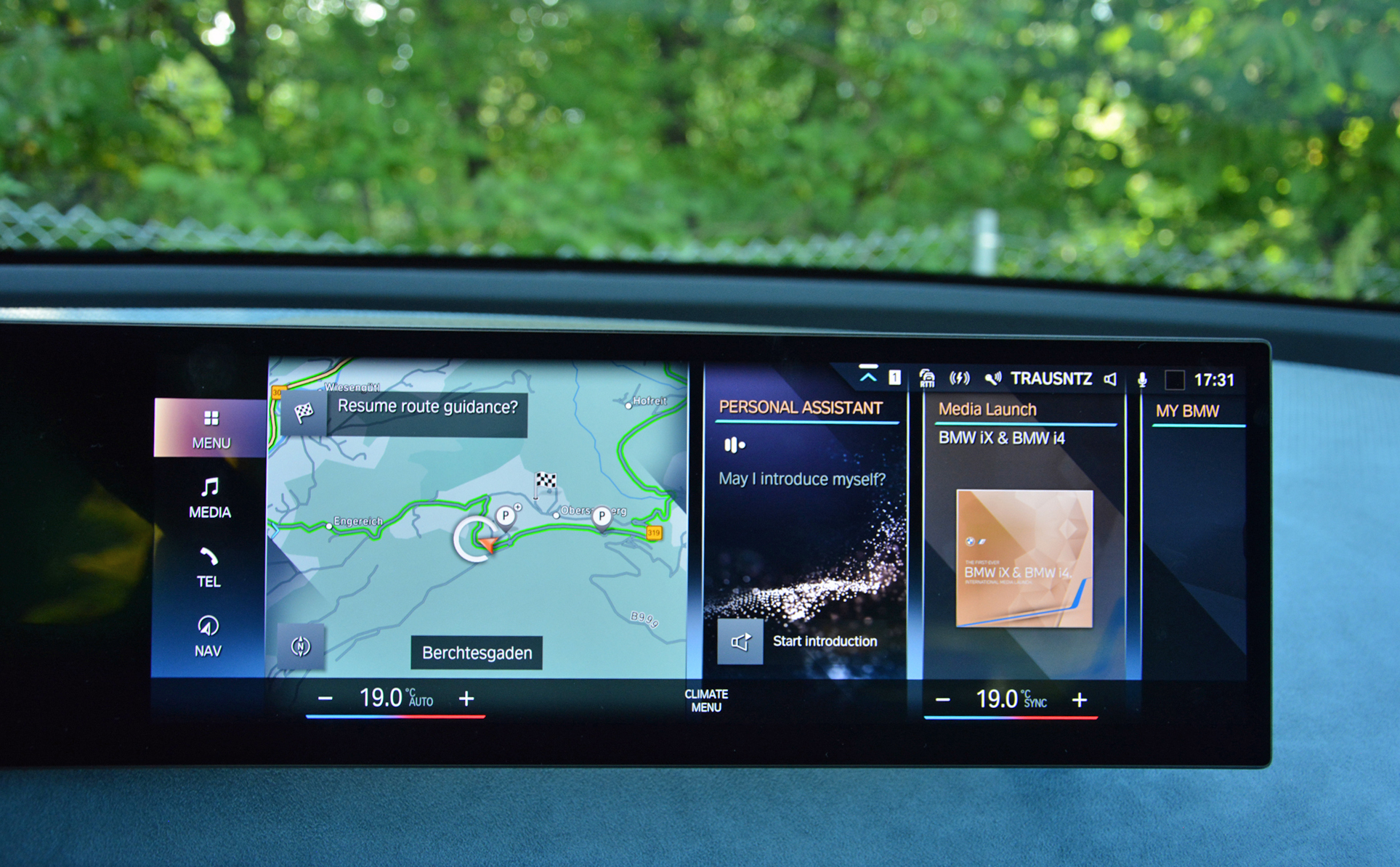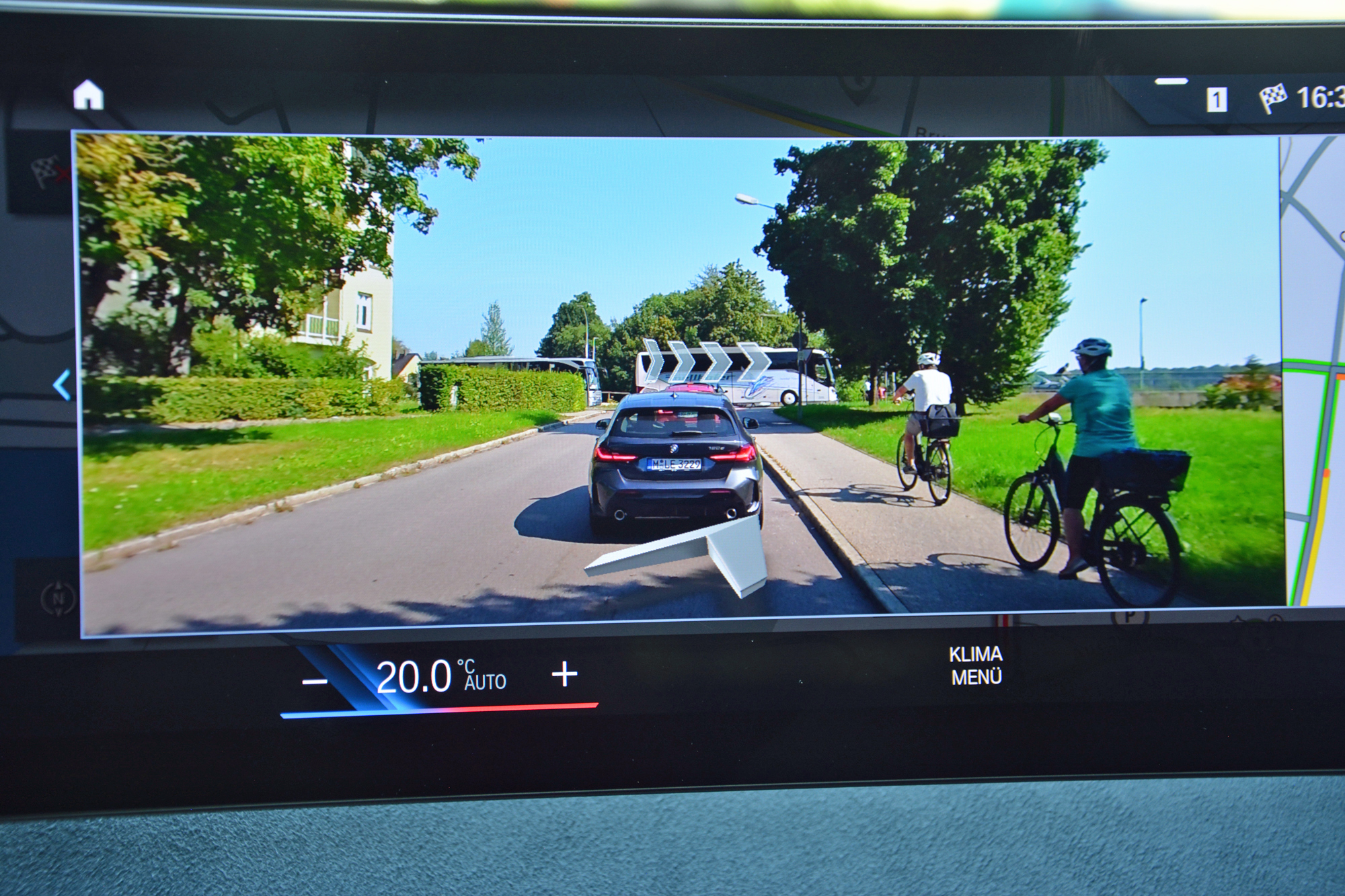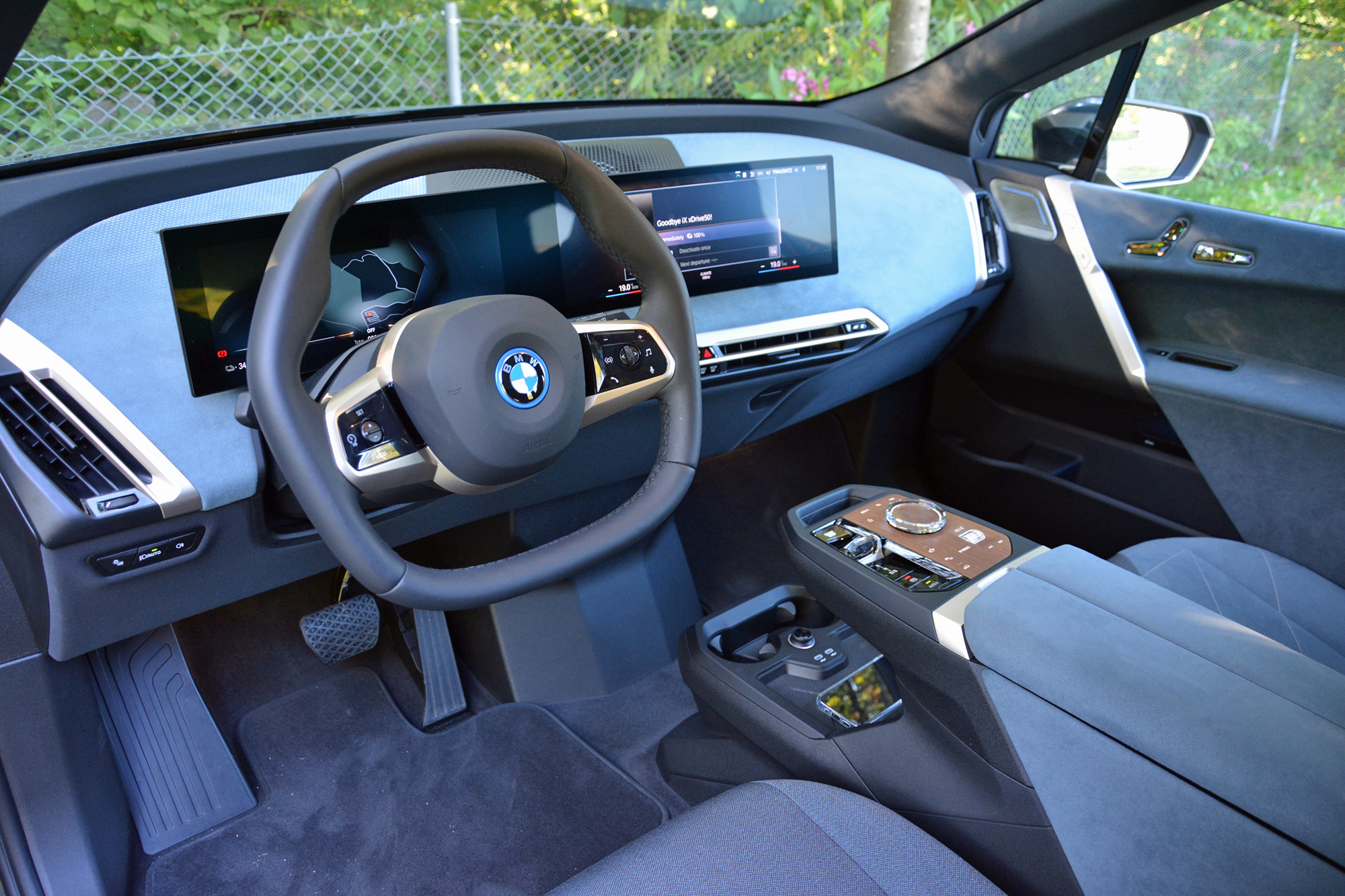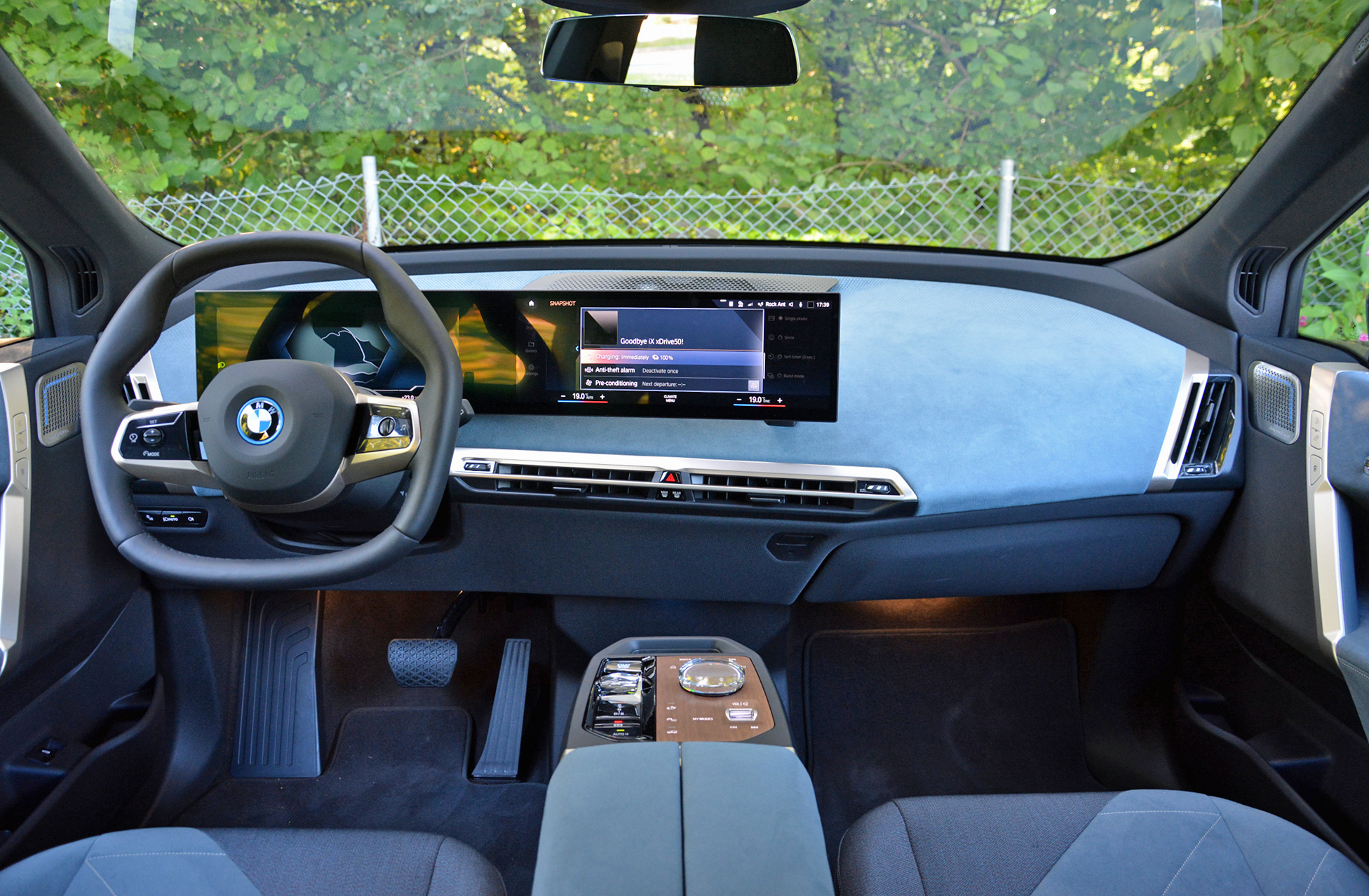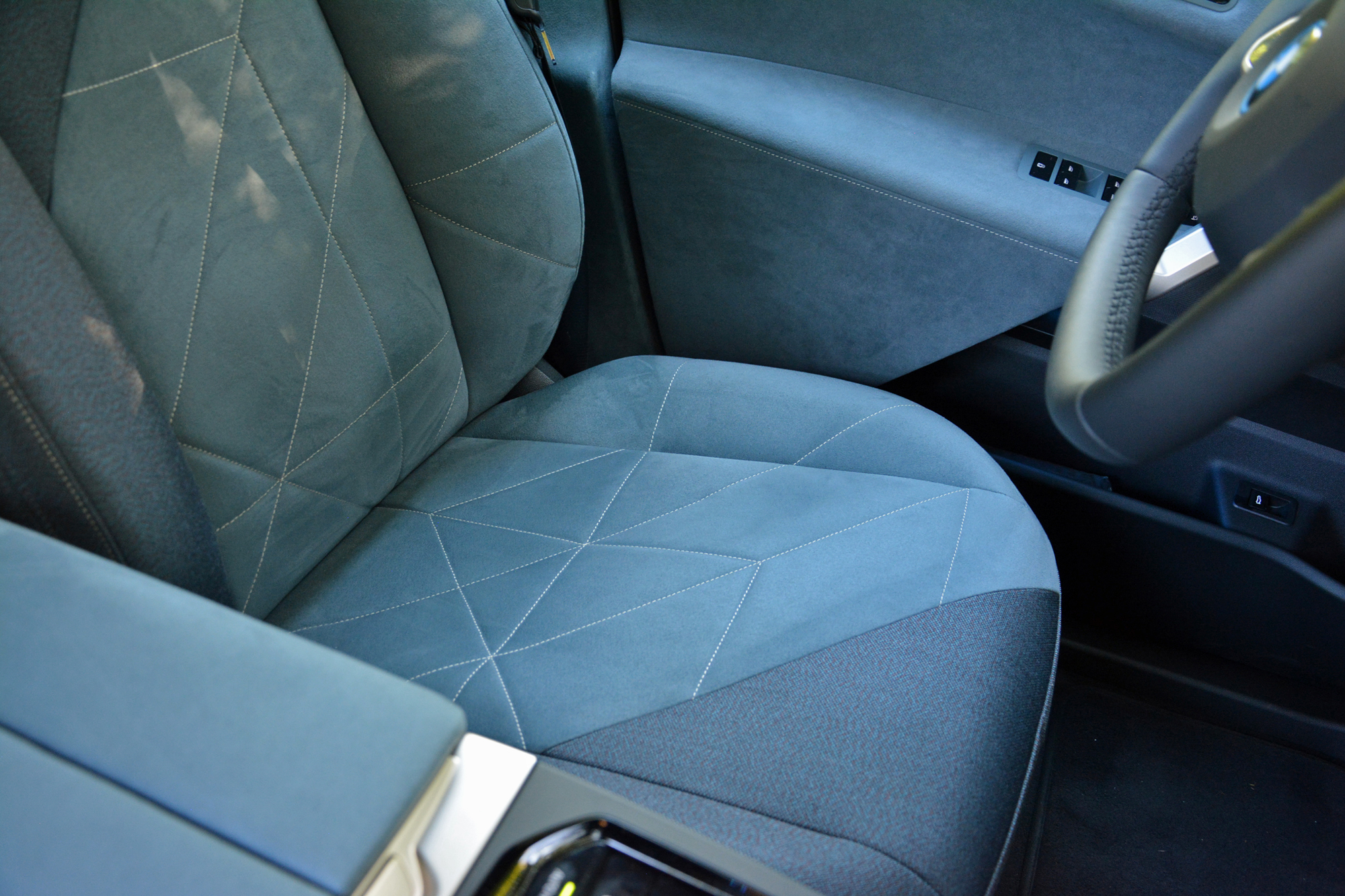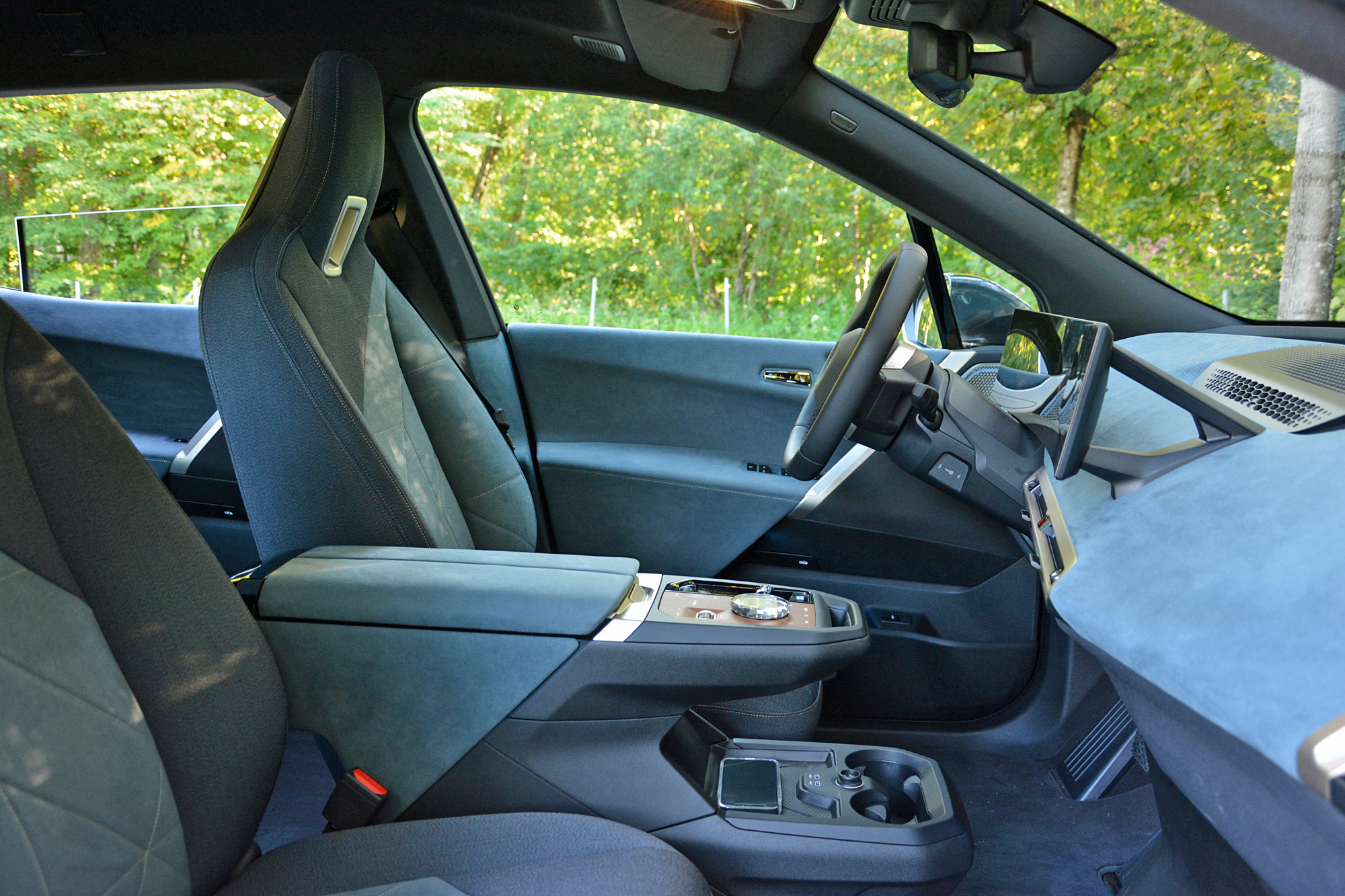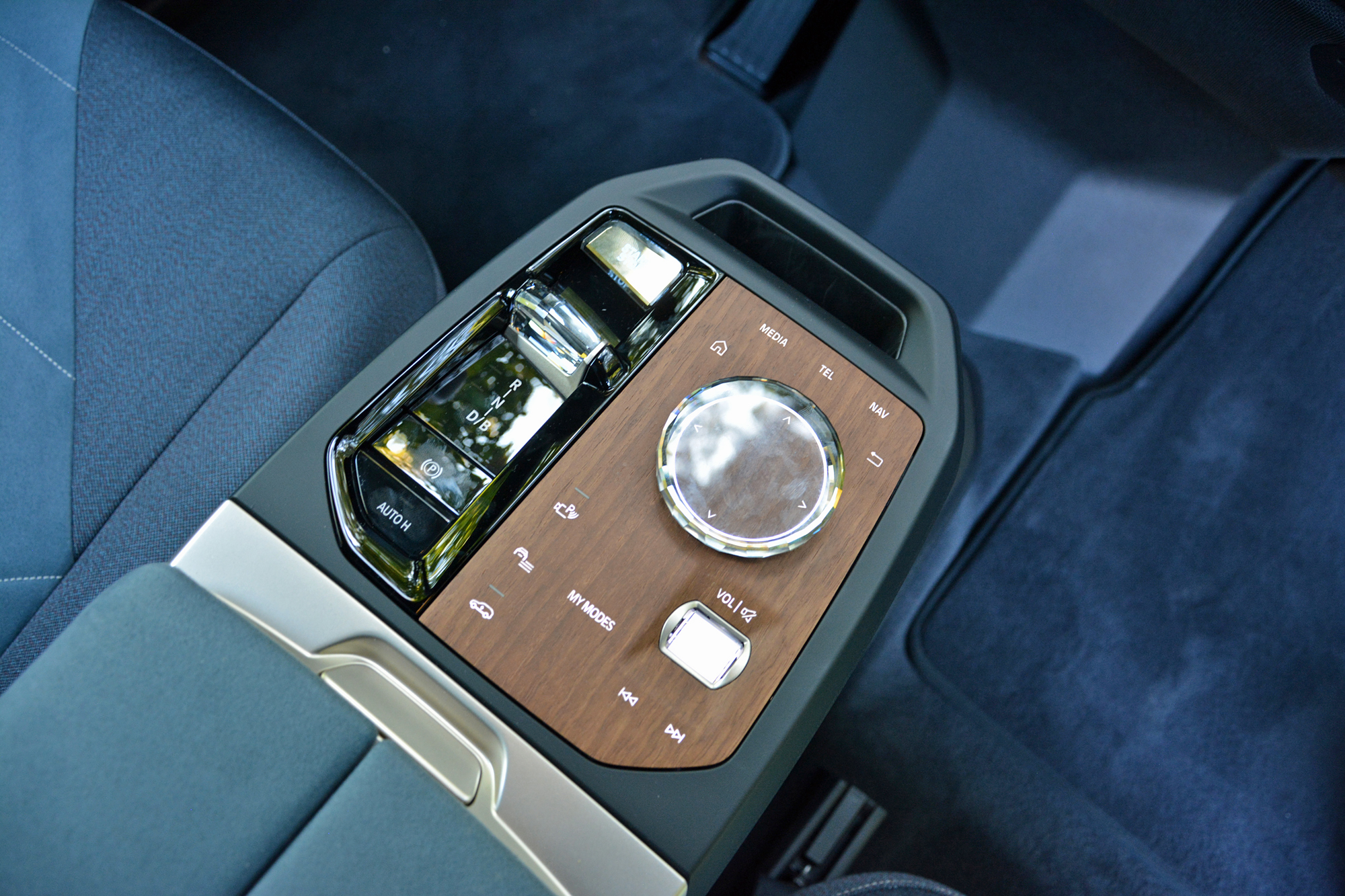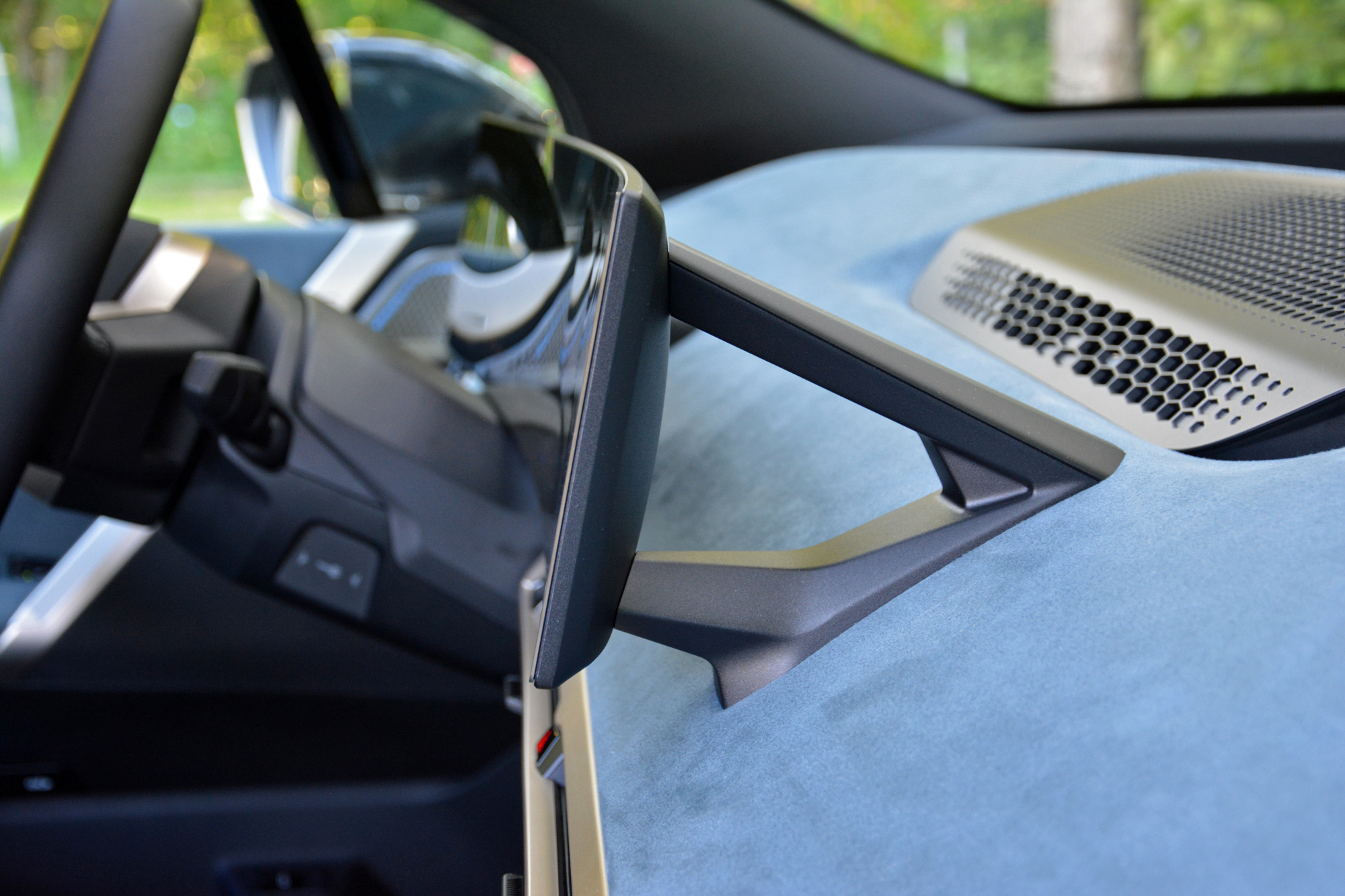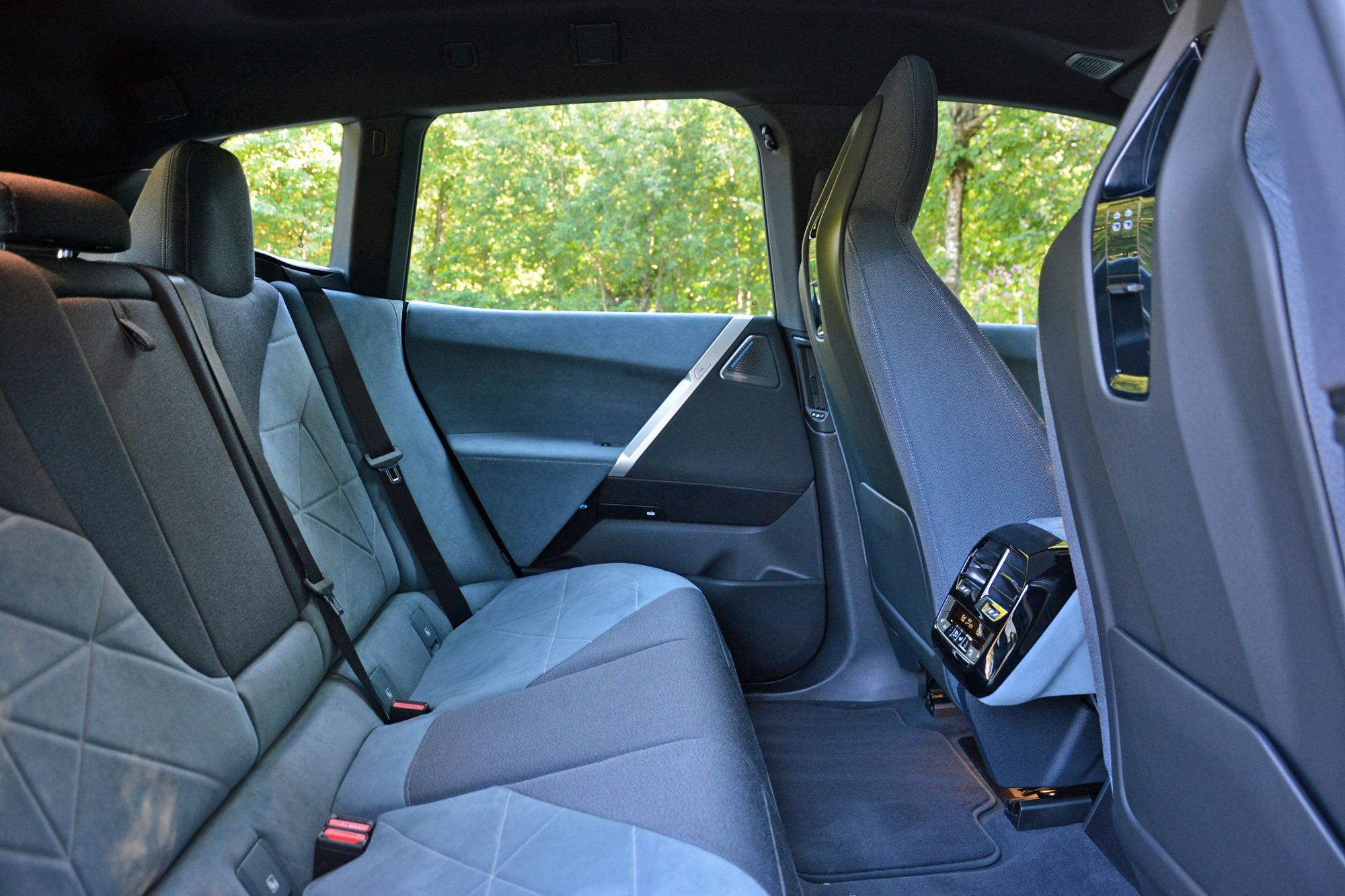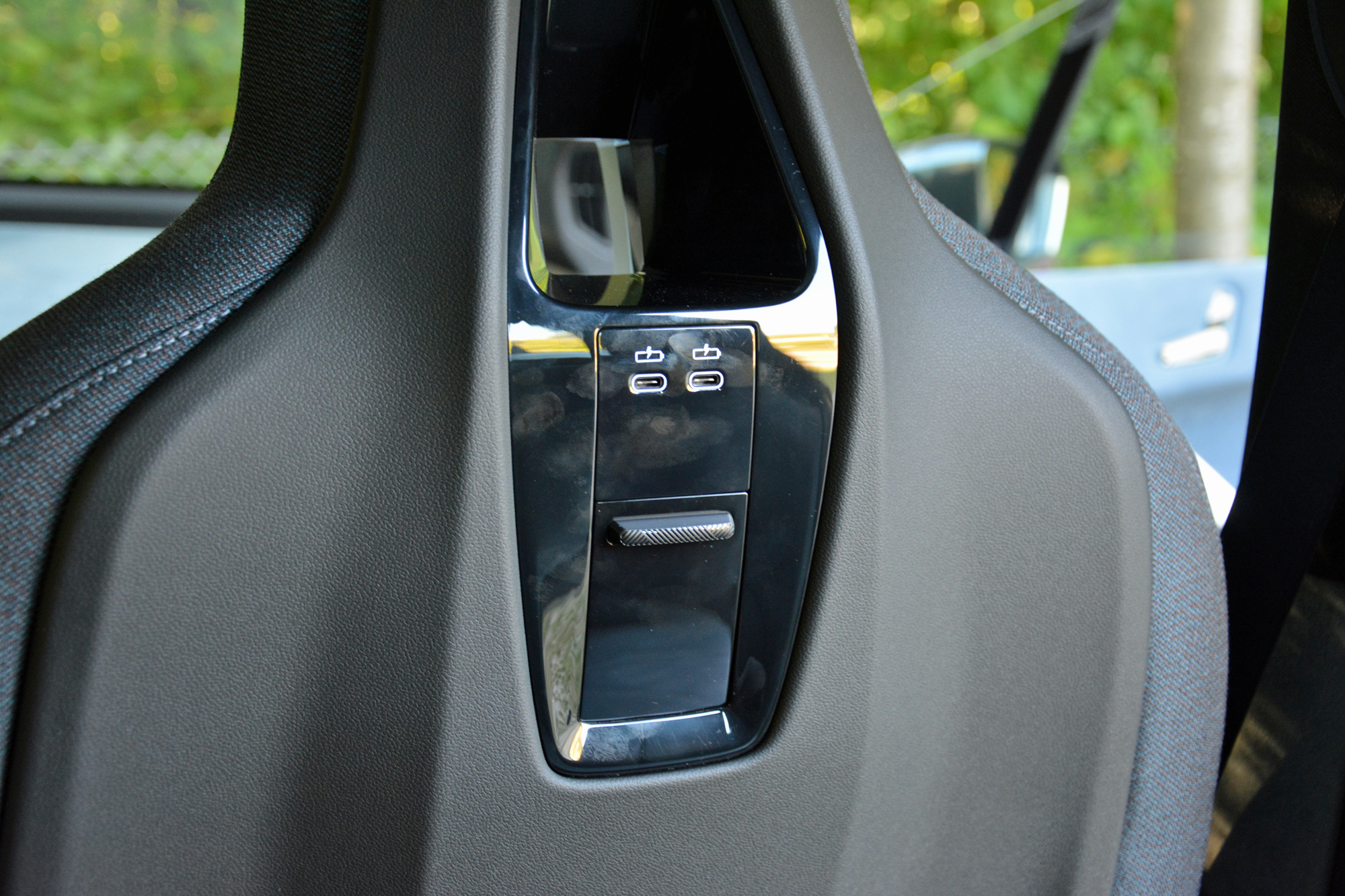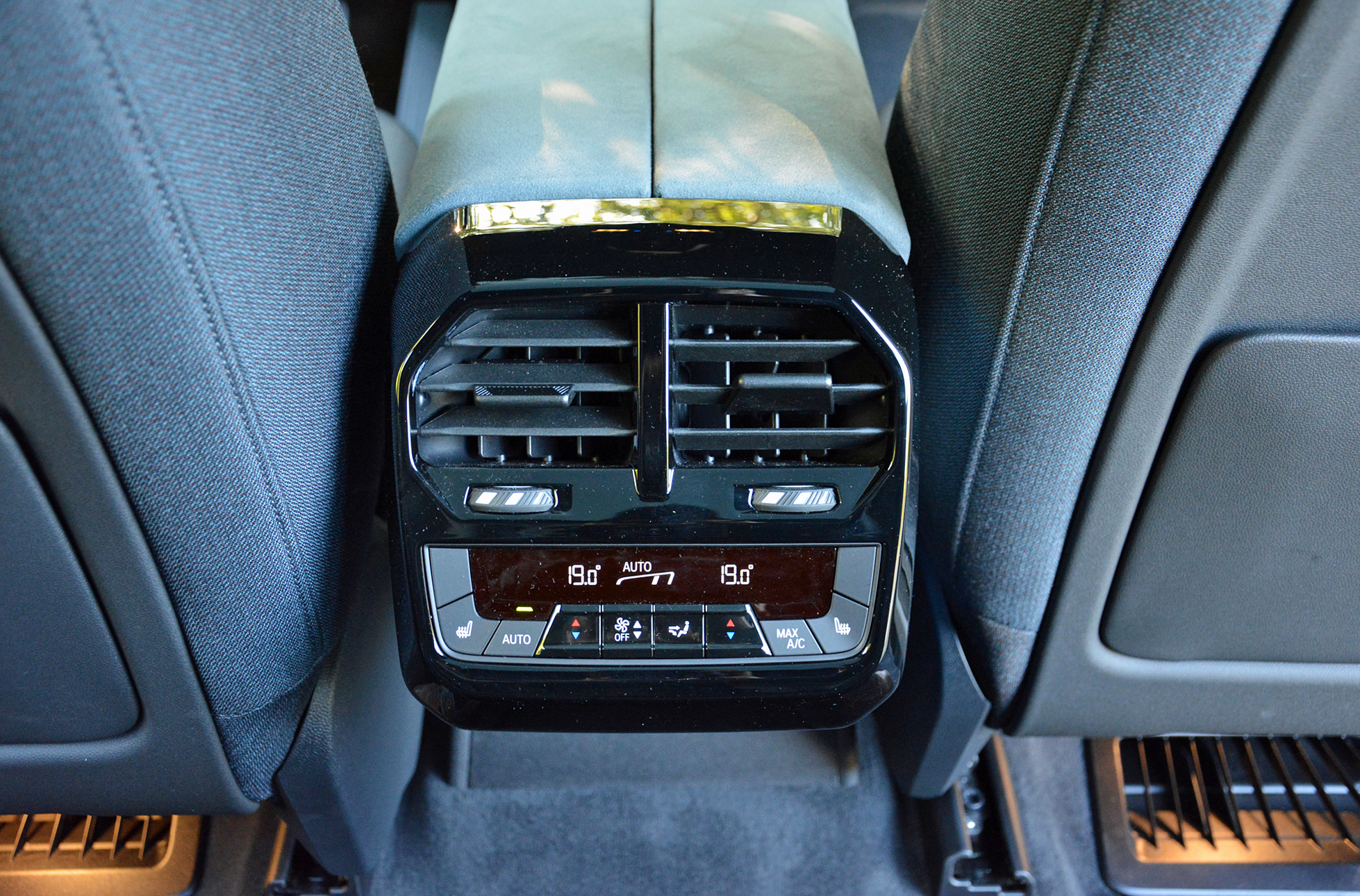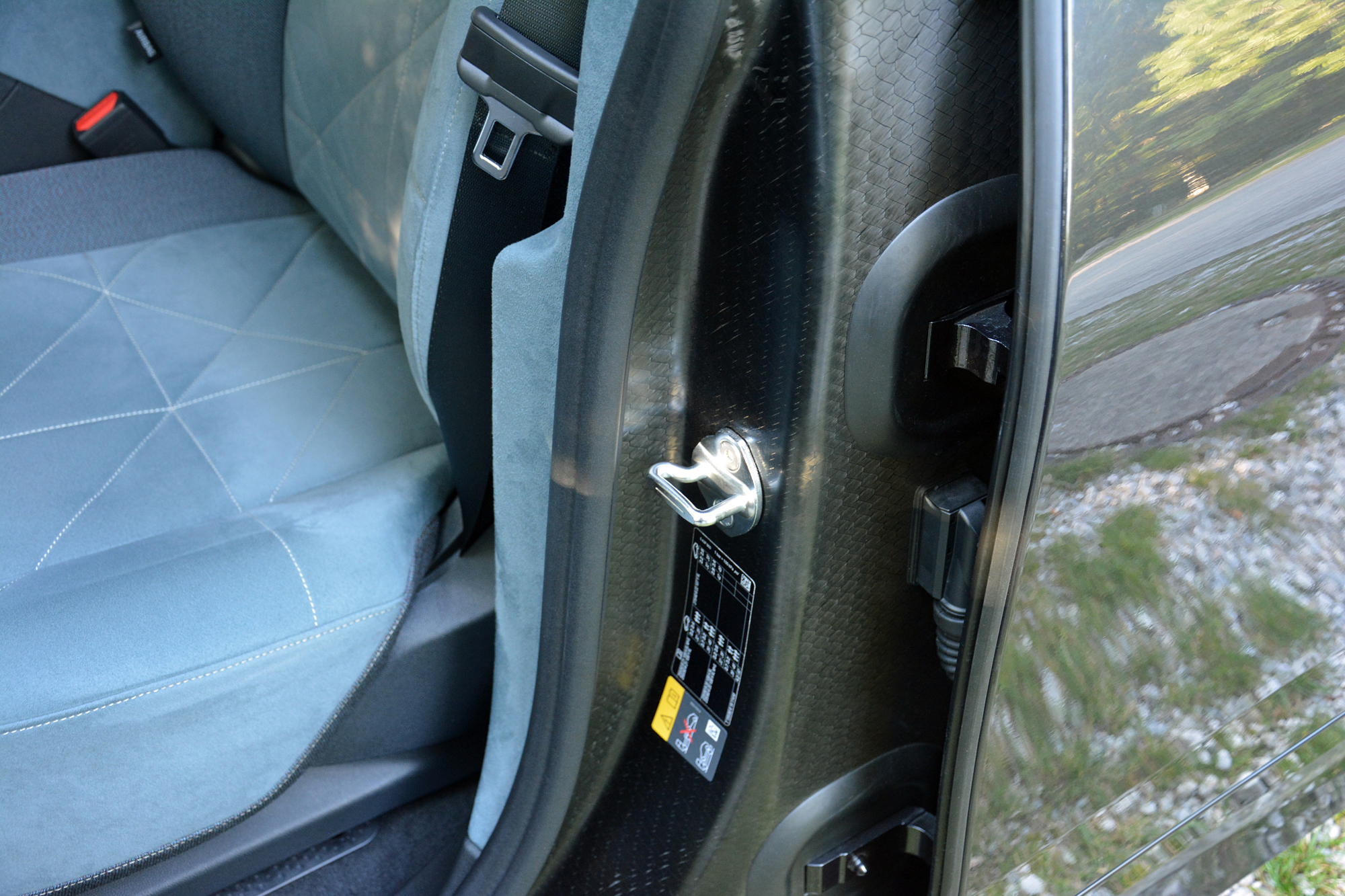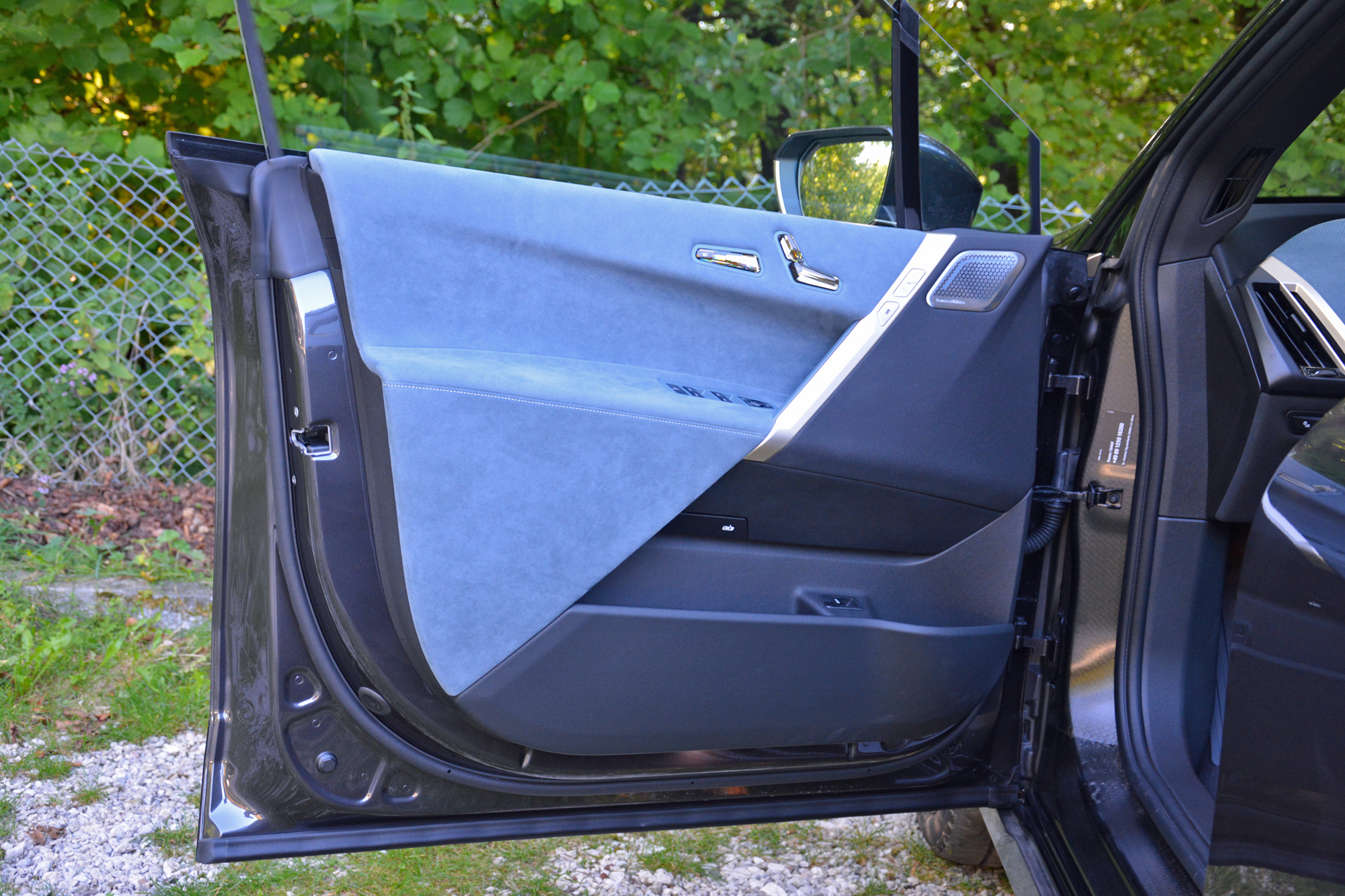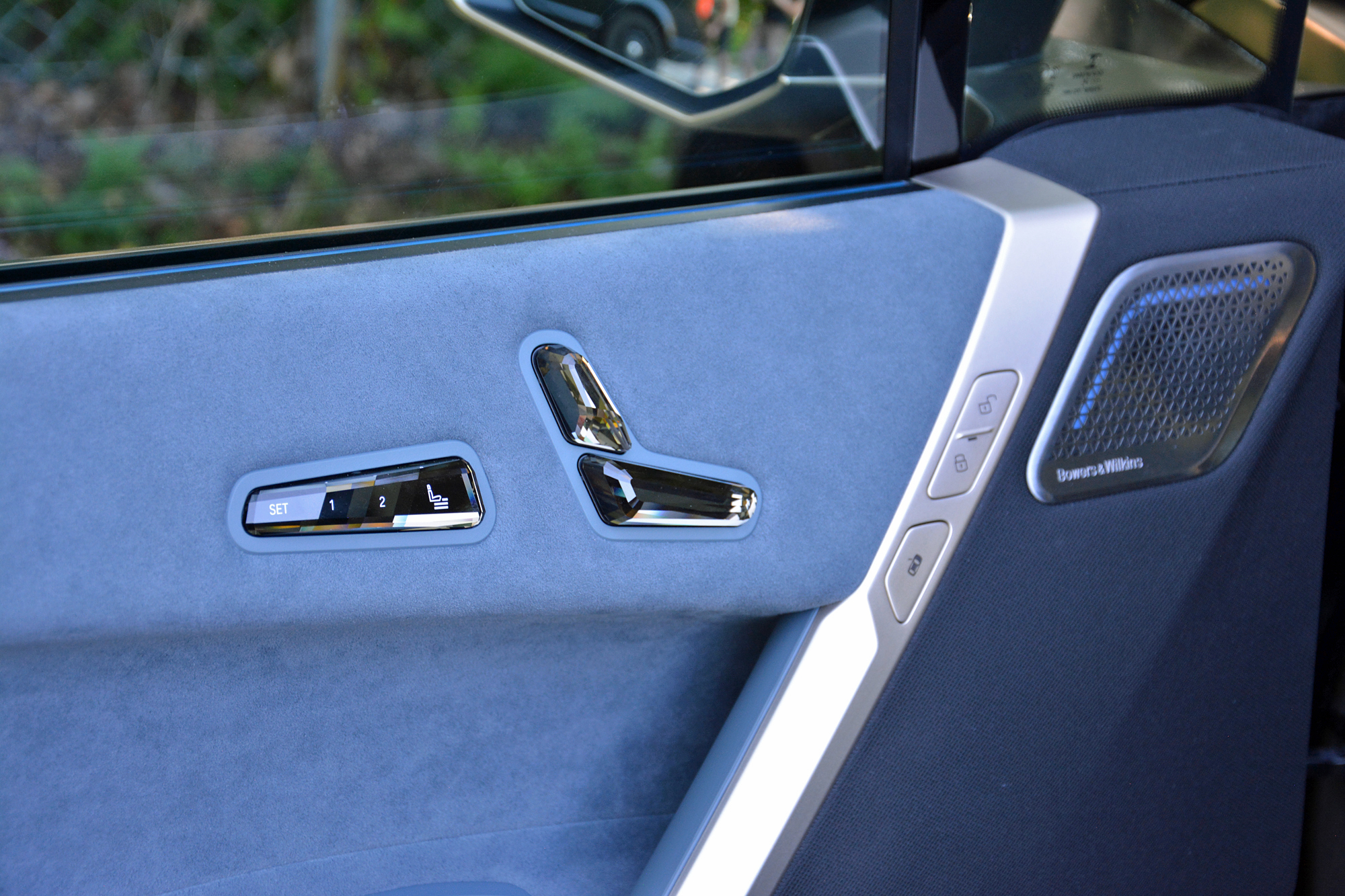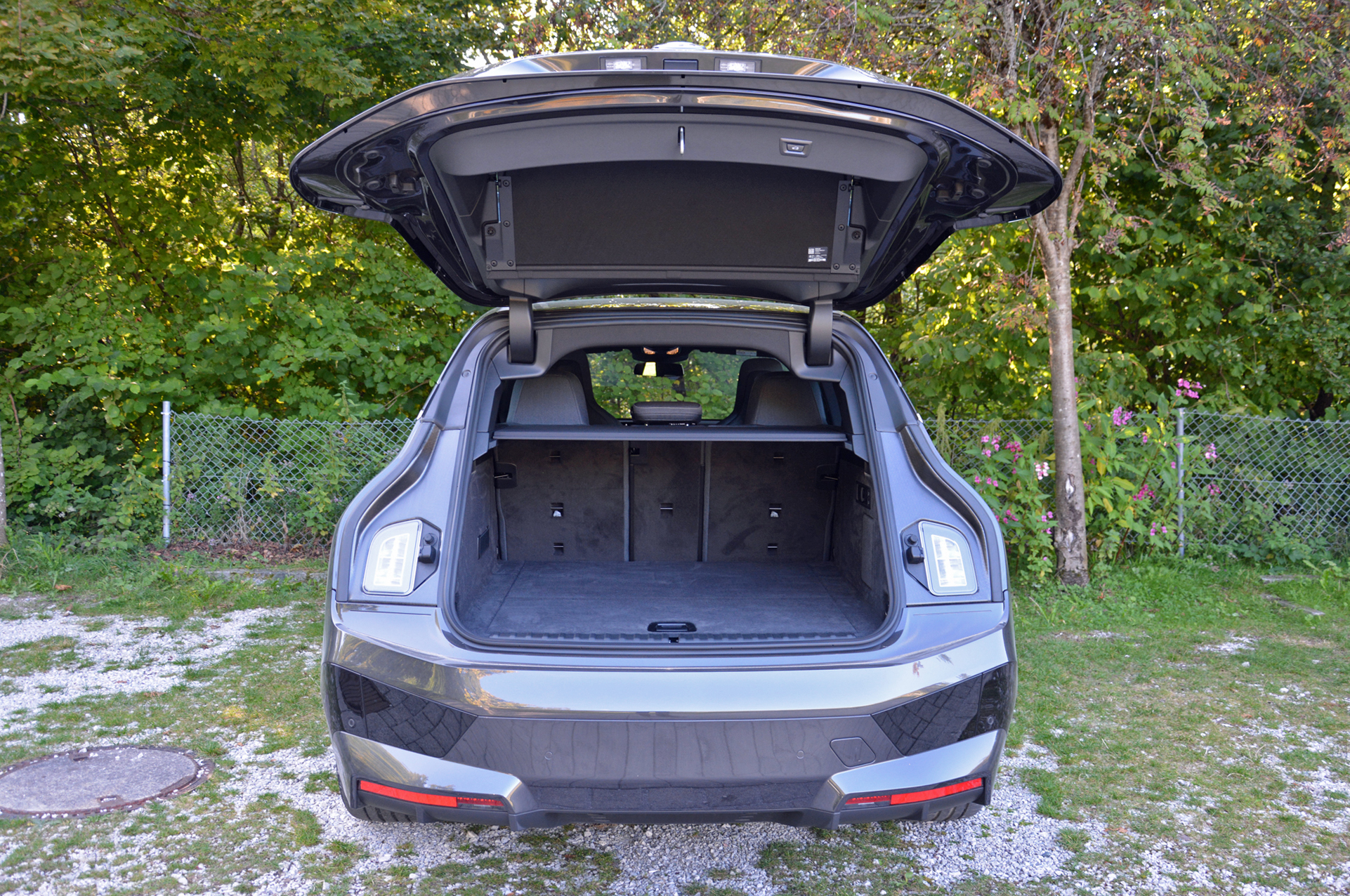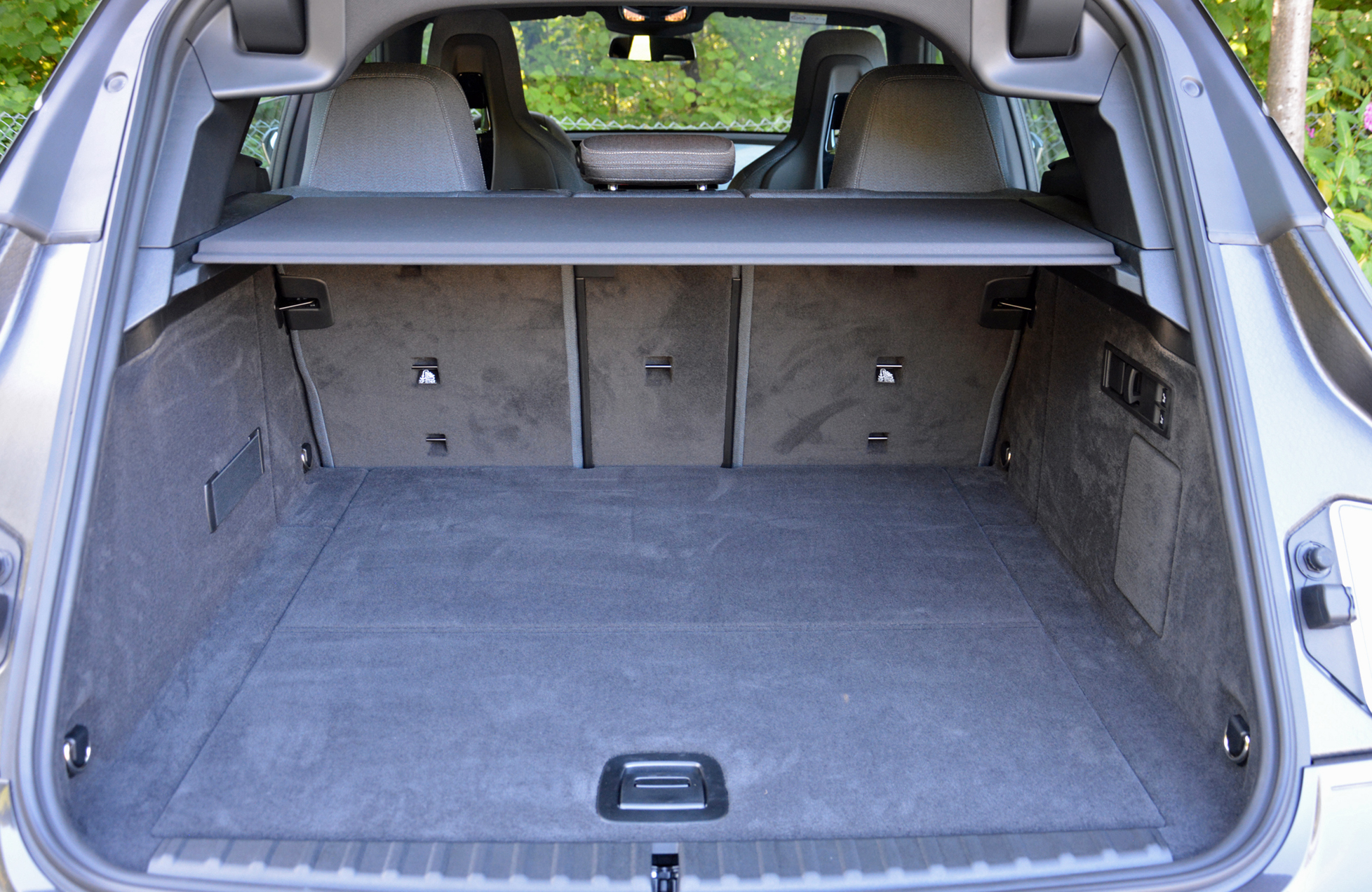When BMW paraded an orange, electric 1602 at the 1972 Munich Olympic Games, no one dared imagine the project would lead to this: The iX. Pronounced “eye-ex,” rather than “ix” or the Roman numeral nine, the iX is more than another electric SUV. It’s a segment-bending family-hauler that breaks new ground for BMW while showcasing the technology that will spread across the range in the coming years.
We got our first taste of the iX when BMW introduced the Vision iNext concept in 2018, and some of the design study’s more polarizing styling cues have made the jump from the drawing board to the assembly line. Much has been said about the giant grille that dominates the front end of most recent BMWs, including the iX’s, and there’s no sense in rehashing all of it in this story. Yes, it’s big. No, it’s not going away anytime soon — research and sales show that the firm’s target audience loves it. Besides, it’s where all of the sensors are hidden. I think it looks more cohesive in person than in photos, but your mileage may vary. What’s more important is the overall package. Built in Germany, the iX stretches 195 inches long, 77.4 inches wide, and 66.8 inches tall, meaning it’s about as long and as wide as the X5 but around 2 inches lower. Its proportions are different: From certain angles, the iX almost blurs the line between a low crossover and a tall station wagon.
Electric technology inevitably adds a big amount of weight to a car, so BMW leveraged its experience in carbon fiber to help the iX shed some of it. Open any of the doors (which feature power-operated latches, by the way) and you’ll immediately spot the composite material before stepping in. It’s a cool reminder that this was designed as BMW’s technology flagship and it’s built with suitably advanced materials.
Where the iX really begins to stand out from the X5 is inside: It packs all of the futuristic features we’ve heard and written about for years, including an octagonal steering wheel, a free-standing high-resolution curved display that groups the instrument cluster and the infotainment system’s screen, and an available built-in 5G connection. It’s also stunningly spacious: An electric motor is more compact than a comparable piston engine so the front passengers enjoy a level of openness that’s unrivaled in the world of gasoline-powered SUVs. And, because there’s no mechanical connection (like a driveshaft that requires a tunnel to spin in) between the front and rear axles, the floor beneath the rear passengers’ feet is almost fully flat. Clearly, going electric unlocks significant benefits in terms of overall packaging.
Smile and say ‘selfie!’
At first glance, the amount of technology stuffed into the iX is immeasurable. Nearly every feature has a dedicated menu in the iDrive 8 infotainment system but everything is presented in a way that’s straightforward and simple to navigate so it’s not as daunting as it looks. And, to BMW’s credit, most of the features drivers regularly use can also be accessed using actual buttons. Adjusting the sound system’s volume, accessing the navigation system, or going back to the home screen can be done by pressing an icon on the center console’s wood panel. Or, if your fingers need a stretch, some functions (like changing the volume) can be performed with basic hand gestures aimed at the screen.
Speaking of the navigation system, the software in the test car BMW loaned me featured a useful augmented reality function. When you’re approaching a street that you need to turn on, for example, the front-view camera automatically sends live footage to the curved touchscreen and interactive arrows appear to show exactly where you need to go. The map remains visible thanks to a split-screen functionality. Augmented reality is a hot topic in the realm of infotainment systems, and BMW’s is the best (and most accurate) that I’ve tested so far.
Here’s something rather unusual: There’s a selfie mode in the iX. From the driver’s seat, look up at the console located between the rear-view mirror and the sunroof and you’ll notice a little lens staring back at you. Launching the app called “Snapshot” wakes it up and allows the front passengers to take a photo by pressing the touchscreen. Several modes are available, including one that only captures an image when it detects a smile. The angle is wide enough to get the five passengers in the frame. It’s certainly not the most useful feature, but, hey, why not?
Decades in the making
Power for the iX comes from BMW’s fifth-generation electric technology. It’s the first iX, yet it uses fifth-gen tech; what gives? Well, BMW has dabbled in battery power for a number of years, most famously with the i3 but also with a number of experimental cars such as the Mini E unveiled in 2008 and the 1 Series-based ActiveE introduced in 2010 and launched two years later. Fast-forward to 2021, and the iX relies on a pair of electric motors (one per axle) that join forces to zap the four wheels with 516 horsepower and 564 pound-feet of torque. Those figures sound enormous, but the iX weighs around 5,500 pounds. It’s nonetheless capable of hitting 60 mph from a stop in 4.6 seconds.
Both motors draw electricity from a massive, 111.5-kilowatt-hour lithium-ion battery pack. While the Environmental Protection Agency (EPA) hasn’t put the iX through its paces yet, BMW estimates that maximum driving range will check in at about 300 miles, though the final figure will depend on a number of factors including the type of wheels fitted (six different styles ranging from 20 to 22 inches are available). Charging the pack takes 11 hours at 11 kilowatts, but it can be replenished from 10% to 80% in 40 minutes with a 195-kilowatt DC fast charger.
Surprisingly, this multitude of ingredients come together to create an easy and relaxed driving experience. The iX is quiet, smooth, and linear to drive regardless of whether it’s in a crowded urban center or on the German autobahn. Nearly everything that initially makes you wonder “what in the world were they thinking…?” turns out to be a pleasure to operate, like the octagon-shaped steering wheel. The front seats are almost armchair-like in terms of comfort, and forward visibility is excellent. The crystal seat switches on the door panels are an exception to this rule: They’re stylish, they look like they belong on a designer necklace, but they also double as mirrors when sunlight hits them.
Each motor spins its set of wheels via a single-speed transmission, so there are no gears to shift, but there are several driving profiles to choose from. Flicking the little gear selector positioned on the center console to the “B” setting dials in a perceptible amount of energy recuperation, which sends the kinetic energy generated while slowing down back to the battery and allows for one-pedal driving. It’s one of the coolest parts of driving an EV: When you’re approaching a stop sign, or when you want to slow down for a bend, you can simply lift your foot off the accelerator pedal and let the car reduce its own speed without using the brake pedal. Leaving gear selector in “D” makes the iX behave like a standard car, so you need to brake to slow down. There’s no right or wrong, it’s a merely matter of personal preference.
With a few notable outliers (look up the Isetta!), BMW has always made cars for the open road, and the iX stays true to tradition. It’s perfectly stable at freeway speeds, though it’s limited to 124 mph so insane autobahn runs are out of the question. BMW told me it chose 124 mph (which conveniently converts to about 200 kph) because it doesn’t think the average buyer will want to go much faster. Another factor that likely played a role in this decision is that, at that speed, the iX loses approximately a kilometer of range every four seconds. High speeds drain a battery pack, just like they empty a fuel tank in record time, but this represents a much bigger inconvenience in an electric car.
On mountain roads, the iX behaves like a tall BMW ought to in the sense that it’s reasonably sharp around a bend. It doesn’t float or exhibit an alarming amount of body roll. It’s not a sports car and it doesn’t drive like one, don’t get the wrong idea, but putting the battery roughly at wheel level helps lower the center of gravity. There’s also a sport mode accessible via the touchscreen that changes a number of parameters like the throttle response, which is a hoot when accelerating out of a corner. Additionally, engaging sport mode turns on a soundscape that more or less mimics the sound an engine emits as it builds up revs. It makes the iX sound like a spaceship, for better or worse.
Right on the money
High-end electric SUVs and crossovers remain a niche in the American market, but it’s a segment that’s growing annually. It’s not necessarily about volume or market dominance; it’s about technology and showcasing what each manufacturer is capable of. Viewed in this light, the iX hits the bullseye as a rolling display of BMW’s tech arsenal, including features that will presumably find their way into more affordable models in the coming years. It’s futuristic, but not disorientingly so. It’s luxurious, but it’s upscale in a completely different way than, say, an X5. Its packaging is certainly unique in the BMW range, and its performance allows it to live up to the roundel emblem on its nose.
At launch in March 2022, the iX range will consist of one model named xDrive50. It starts at $83,200 before a mandatory $995 destination charge (which is like shipping and handling for cars) plus any and all available incentives enter the equation. It’s not cheap, it costs about the same as upmarket variants of the X5, but that’s par for the course if you’re shopping for an electric car regardless of whose showroom you step into. For the money, buyers get a generous list of standard features including 20-inch wheels, a panoramic sunroof, heated front seats, ambient lighting, a wireless device charger, a navigation system, Apple CarPlay and Android Auto compatibility, plus numerous driving aids.
Editors' Recommendations
- Tesla launches more affordable Model S and Model X, but there’s a catch
- Business upfront, 31-inch TV in the back. BMW’s electric i7 is a screening room on wheels
- 2022 Mercedes-Benz EQB first drive review: An EV better than its gas sibling
- The all-electric BMW i7 is a home theater on wheels
- 2022 Volvo C40 Recharge first drive review: EV fashion statement

